Breeze
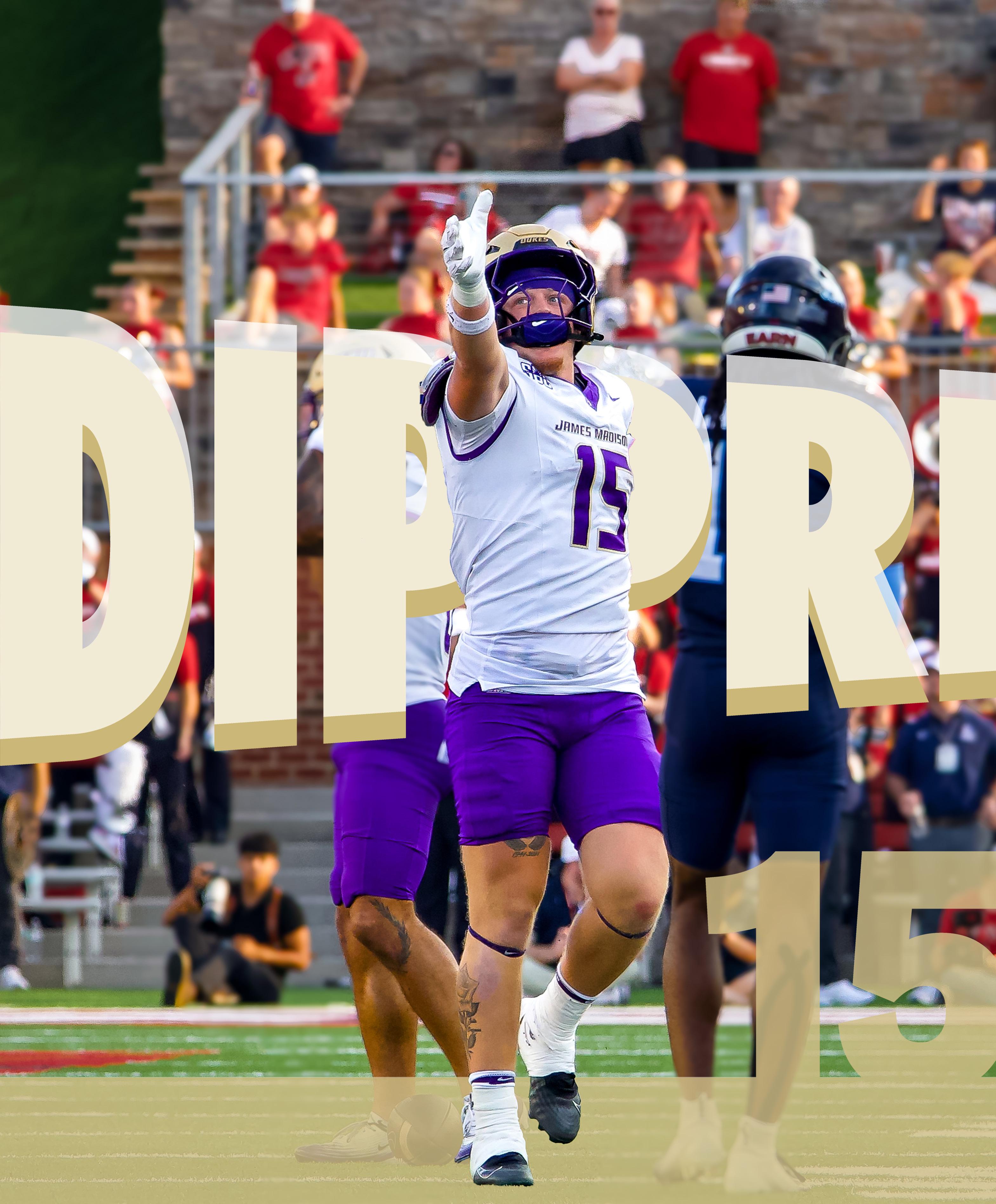




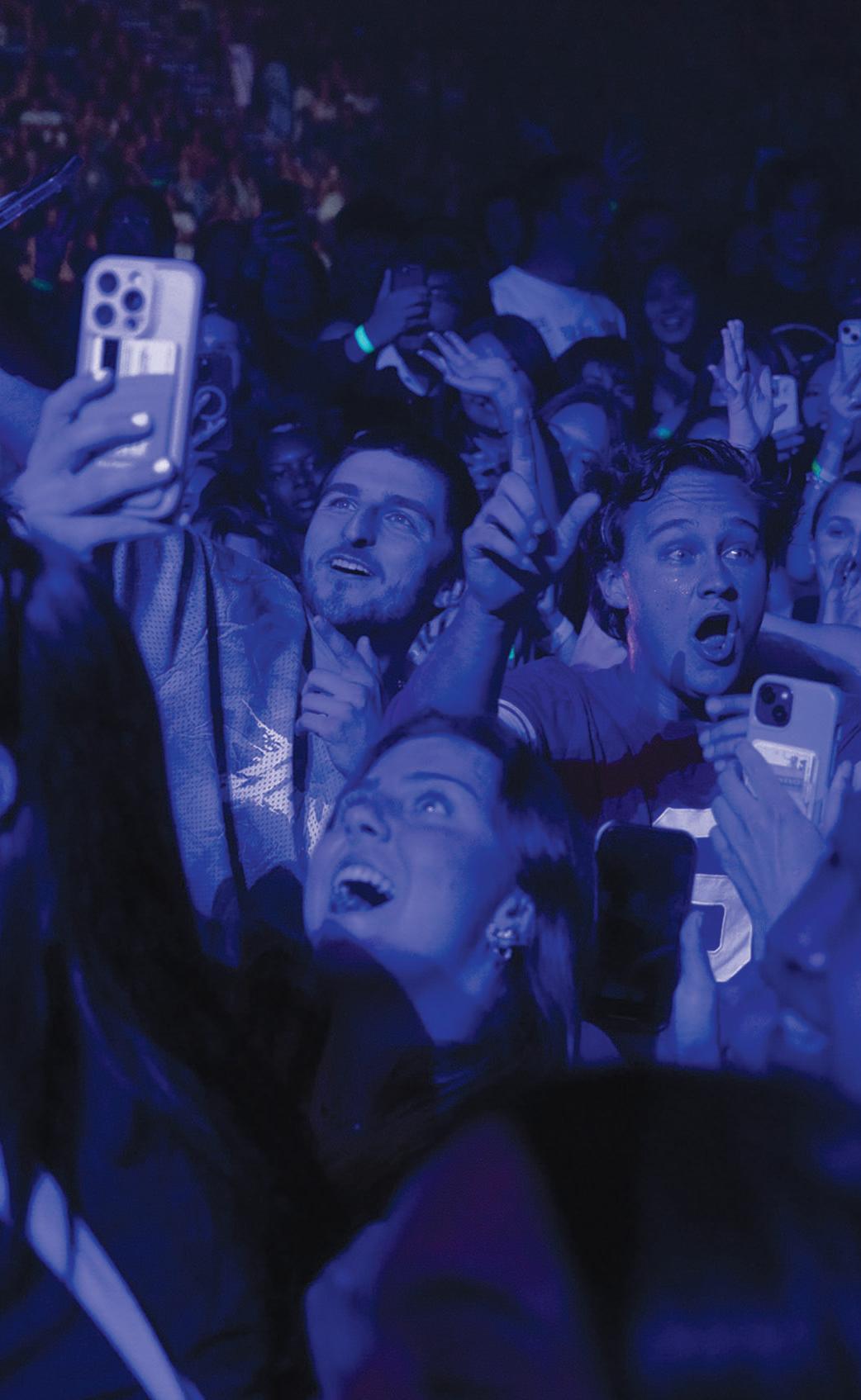

















EDITORS Emma Notarnicola & Landon Shackelford EMAIL breezenews@gmail.com
By EMMA NOTARNICOLA The Breeze
Faculty from across campus completed three main proposals to revamp the General Education (Gen Ed) Program which will be evaluated and finalized in the coming year. All three are currently open to university review until Oct. 15.
“None of the three will be implemented. Those are all first drafts,” said mathematics professor Elizabeth Brown, who coordinates the Natural World portion of the Gen Ed Program.
“The committee that I’m on is tasked with looking at those [proposals] and listening to the feedback from campus, and then trying to make a next iteration, which will again go out to the campus community for review, and then there will be another revision.”
These proposals come after an academic program review during the 2020-21 school year during which “external experts” visited JMU and assessed its current programs, identifying problems that should be targeted, including lack of accessibility for students for more demanding majors, Senior Associate Vice Provost for Faculty Affairs and Curriculum Meg Mulrooney said. She added that JMU is now taking the first major steps to addressing these problems.
“Just the sheer scope of the [Gen Ed] Program means that even when you know that things need to change, it can take a long time to get through the process,” Mulrooney said, “so we’re in the middle of that process now.”
Over the summer, these program proposals were created and solidified by the university’s summer team based on “significant faculty input” and research found on the Core Curriculum Appraisal Task Force website, according to an Aug. 21 email sent from Interim Provost and Vice President of Academic Affairs Bob Kolvoord to JMU faculty.
“I’ve had a chance to have a look at the proposals and there are a lot of interesting ideas embedded in the plans,” the email read.
The next steps throughout the next few years will focus on revisions with feedback from all students and faculty on campus, and proposals will first go to the Ad Hoc Core Curriculum Committee, where the committee will work toward compiling feedback from faculty, students and staff at JMU, the email reads.
Faculty and students will review the proposals by Oct. 15, when it will enter into a revision time period that will last until the second feedback period — Nov. 17 to Jan. 16, according to the Gen Ed committee timeline.
The Gen Ed committee offers proposal feedback sessions over Zoom and also provides an electronic review for those unable to attend. The next review session will be Monday from 1:30 p.m. to 2:45 p.m.
Faculty and students are encouraged to participate in the review process. They can submit their opinions via an electronic feedback form. This feedback allows for the creation of the most optimal program, which highlights the best parts of each proposal, Brown said.
The general timeline for the process will take place before the 2026-27 academic year, hopefully with an operational structure for the incoming freshman class, Brown said. Currently, the primary focus of this academic year is to review the proposals, she said.
Like renovating old buildings, occasionally academic programs need to be revitalized, Mulrooney said. This process happens to majors, minors and now Gen Eds.
“Program renewal is a normal part of higher-education work,” Mulrooney said. “Faculty will get to a certain point where they find from evidence … that the program just isn’t working as well as maybe it could.”
The current program is separated into five areas of study: Madison Foundations, Arts and Humanities, The Natural World, American and Global Perspectives, Sociocultural and Wellness Area, according to JMU’s website.
“The last time the Gen Ed Program was changed this drastically was the mid-’90s,” Brown said, adding that “the world is different.”
The university’s attendance, major and minor growth since the Gen Ed Program’s last revamp has led to problems such as the necessity to double-count classes to graduate in the typical four years.
The university has made smaller adjustments within the program, such as removing the “clusters,” adding new courses and implementing a more generous transfer-credit policy, but now it’s time for larger changes, Mulrooney said.
“It needs a couple of really big changes to reflect where we are in 2025, and what students need in 2025,” Mulrooney said.
JMU has grown a lot since the last time this program was changed, between the number of students to the amount of majors, Brown said.
“There was no engineering [in the ’90s], ISAT didn’t exist, so the number of different student majors that we’re trying to serve with one program has really increased,” Brown said. “Different majors legitimately have very different paths.”
Brown added that some majors are very “tightly sequenced,” while some are more “open-ended,” so depending on different major requirements, it may be more challenging for some students to fit Gen Ed credits into their schedules.
“Students need much more choices than before,” Mulrooney said, “more flexibility to accommodate them.”
For the revamp, three new programs were proposed to help combat these issues and allow for a more flexible and relevant Gen Ed Program.
The three programs — Build Your Madison Experience, Dukes Engage and Prepare for Unexpected Futures — each introduce a variety of credit hours for their respective courses, Mulrooney said, though all three will have generous transfer credits that work in line with the Virginia Community College System.
The first program, Build Your Madison Experience, is “slightly leaner than the current program” and prioritizes giving students “agency and flexibility,” Brown said.
Build Your Madison Experience works to emphasize an outcomes-based structure that maintains the strengths of the current Gen Ed Program and “expands its most innovative elements,” according to its proposal.
This program will build an upper-level experience with “Madison Moment” — and integrative courses that will jump off from the current “Madison Foundations” Gen Ed requirement. This proposal adds in the “Madison Core,” which will require 25 credits from the eight “outcome-based” core areas and finally the “Madison Moment,” which will combine the students’ knowledge from both major and general education courses into an upper-level class, according to the same proposal.
Faculty would be encouraged to design courses on topics they’re passionate about and allow students to build individual Gen Ed experiences. This program will reduce the current number of credits required from 41 to 37 and prioritize a system of “validating and rewarding faculty,” according to the same proposal.
The next program, Dukes Engage, is a “rich program” that increases credit hours and gives an overview for students on a number of ways to succeed, Brown said.
Moving away from the checklist, this program focuses on starting with Madison Foundations, which requires different aspects from Madison Pillars, the four core pillars of learning, and ending with the Culminating Learning Experience.
The program will increase the credits to 42 with a required 14 courses. Madison Foundations is a set of four requirements students would complete in their first year of JMU: Dukes Discover, Dukes Thrive and two Dukes Communicate courses.
The other new program is the Culminating Learning Experience, where students would get credits to fulfill their requirement in real-world project-based learning, like internships or study abroad programs.
Finally, Preparation for Unexpected Futures is a “very lean” program focused on preparing students for change, Brown said.
This program would prepare students for “expected and unexpected future” through a myriad of courses with a 30-credit requirement, down from the current 41 required credits.
The program is based around literacy, with five offshoots: structures, systems, stories, sources and strategies. These courses will prepare students to adapt to unknown futures as the world develops.
One concern about the changing Gen Ed Program is the university’s resources and limitations, Brown said.
However, Brown added she thinks the right program will be able to overcome these issues.
“The good program is a program we can actually make happen,” Brown said. “So everybody who’s involved in resources has to look at this and think about it.”
Associate professor of political science Abe Goldberg, who teaches a Gen Ed political science classes, said he agrees with this sentiment and thinks that, though resources may become a problem down the line, it shouldn’t constrain these current proposals.
“Obviously, there would need to be a question of resources whenever you make a change to such a large program like that,” Goldberg said, “But I would hope that we’re not constrained by resource questions at this stage as we’re dreaming up what it ought to look like.”
These programs all lead to upper-level ambiguous courses and give students experience with a lot of resources going into developing an effective program that emphasizes critical thinking and communication, Mulrooney said.
As the university grows and changes, these programs provide room for curriculum updates, Mulrooney said. One example of this is a developing course that discusses artificial intelligence (AI) and digital literacy, she added.
“I think there’s also an interest in designing the program so that in 10 years, when AI is not the big, big new question — or five years, or six months — the framing of the program will be relevant to students who then say, ‘Oh, this is an emerging technology or situation that we all need to understand,’” Brown said.
Read more online at breezejmu.org
CONTACT Emma Notarnicola at breezenews@gmail.com. For more coverage of JMU and Harrisonburg news, follow the news desk on X @TheBreezeJMU and on Instagram @BreezeJMU.

By SIERRA STOCKMAN & EMMA NOTARNICOLA The Breeze
The Student Government Association (SGA) will host Dukes Debate to educate attendees about the upcoming gubernatorial election as two students argue in favor of their respective party’s platform in the Festival Ballroom on Oct. 13.
The organizer of the event, junior and SGA Legislative Affairs Chair Caroline Spurling, said Dukes Debate is an annual campus-wide event that's is a conversation about that year’s election, in this case, the Virginia gubernatorial election happening Nov. 4.
“Students can come to the debate to see both sides, both candidates and their platforms, and then go to the polls a few weeks later and make an educated vote on what they believe in and what they think is best,” Spurling said.
Senior Mason Hoey will be representing the College Democrats in the debate. He said he planned last year’s debate and thought it would be interesting to be on the other side of it.
“I work for the Andrew Payton campaign, and I know the president of the College Democrats, so they asked me to be their debater,” Hoey said.
Along with this, senior College Republicans representative Reagan Polarek said she's excited to share her views and have an educational debate with Hoey.
“I’m honored to have been chosen to represent College Republicans,” Polarek said, “I hope this can be a model for people in the future to step out of their comfort zones and have conversations with people who think differently than them.”
Debaters are selected by an invitation sent to the College Republicans and College Democrats, and if they accept it, they coordinate with their own organization to provide a nomination to represent them, Spurling said.
During the debate, Hoey and Polarek will discuss topics on education, safety, healthcare, identity, labor/economy, the legalization of marijuana, environment and climate change, Spurling said.
“Finding the topics is one of the hardest things to have decided on in the first place because there are a lot of factors that go into it,” Spurling said.
Polarek said that she’s very excited about these topics, especially education, due to her experience working with the Virginia Secretary of Education, Aimee Rogstad Guidera, over the summer.
“I think that I will use a lot of the things that she taught me and try to portray the values behind the decision-making in our educational system in Virginia as best I can,” she said.
To prepare for the event, Hoey said he’s been looking at the policies of gubernatorial candidates Abigail Spanberger (D) and Winsome Earle-Sears (R) to figure out where they both stand to be able to shape an argument that’ll help him be successful in the debate.
Similarly, Polarek said she has been putting in a lot of research to find how to best represent those she speaks for while simultaneously educating the public.
“I’m definitely doing a lot of research, talking to a lot of people on the Republican side, and just hearing about what they think, and I’ve learned a lot already,” she said.
Hoey said events like these are important on campus for students because they open the door for civil discussion on political topics.
“I think it’s really important that we work to educate and make the student body more engaged both civically and just more educated to make sure they actually know what’s going on in their lives and the government,” Hoey said.
Along with this, Spurling said education for students is particularly significant because, after the election, one candidate will make policies that directly affect Virginias’ everyday lives.
“It’s important not only now in our JMU bubble, but also once we graduate,” Spurling said.
Polarek said she hopes students will come to learn about this election because it plays a big role in their future.
“I think that especially education is something that affects every single one of us as students,” Polarek said, “rising costs in student loans and the quality of our public schools directly impact our educational experience as college students.”
Polarek added that though she’s excited to talk about politics and share her beliefs, she thinks this event is important because it highlights respectful deliberative conversation.
“You know, just talking with people who are different from you and just keeping respect at the center of it all is really, really important,” she said.

Dukes Debate establishes the importance of being educated, Spurling said. She added that she’s hoping for a turnout of around 500 students about 200 more than last year’s to spread voting knowledge and the valuable information from this debate.
“The thing I’m hoping for most out of this is civic education,” Spurling said. “I want students to feel confident in who they’re voting for and confident in their authority to vote and make an educated decision.”
CONTACT Sierra Stockman at stockmsg@dukes.jmu.edu and Emma Notarnicola at breezenews@gmail.com. For more coverage of JMU and Harrisonburg news, follow the news desk on X @TheBreezeJMU and on Instagram @ BreezeJMU.
By EMMA BROWN contributing writer
Many students’ Dukes inboxes have been flooded by strange emails from unknown senders, marking an increase in scam and phishing attempts.
The Information Technology (IT) department keeps surveillance on the scams reported to abuse@jmu.edu, monitored by the security engineering team and email administrators, Director for IT Security V Kagey said.
“When we see emails being reported to us, we can look into it a little bit further. Then we can see that there’s a whole lot of phishing going on, and take steps to reduce that in people’s mailboxes,” Kagey said.
Kagey said these emails usually try to create a sense of urgency in subject lines to more effectively target recipients.
“Be suspicious when it creates a sense of urgency. That’s a good tip to suggest it might be a scam,” Kagey said.
A JMU email alert sent to students Sept. 25 warned about scams offering jobs for a small amount of hours and a large amount of money, as well as requesting payment to obtain the job.
“That’s a red flag,” Kagey said. “Employers don’t ask you to pay them to start working for them.”
The scam emails that have been sent out over the past couple of weeks have usually consisted of a blank email with a document attached, Kagey said. The sender often uses a random Gmail address.
Upon opening the document, recipients may see another urgent message plus a link to a Google Form. The forms try to get basic information about the receiver — such as their name and personal email address — to continue the scam outside of the university email system.
“That way, they have a better chance of furthering their scam,” Kagey said.
Kagey said he believes the recent increase is due to scams cyclical nature.
“Generally, scammers move targets, so they’ll target us for a while, move on to another institution after a while; it’s what they do,” he said.
Although there’s no way to know for certain who is sending these messages since they’re all from valid Gmail accounts, there are still some filters in place, Kagey said. JMU uses Microsoft Outlook, which provides some filtering services.
A common way to identify a phishing scam is to determine what the email is asking of the receiver, Kagey said.
“They just want to get some information from you, whether
that’s personal information so they can turn around and perpetrate a crime against you, [or] perhaps they’re trying to get personal info that they can use for another scam down the road,” Kagey said
CONTACT Emma Brown at brown9eg@dukes.jmu.edu. For more coverage of JMU and Harrisonburg news, follow the news desk on X @TheBreezeJMU and on Instagram @BreezeJMU.

By SIXUAN WU The Breeze
It all began with a question.
In 2013, then-philosophy professor William “Bill” Hawk asked himself: “How can I help my students in their daily lives make better ethical decisions?” From there, the Eight Key Questions (8KQ) were born — a series of questions individuals could ask themselves to evaluate the ethical concerns in any given situation.
For over a decade, the 8KQ has been the center framework of JMU’s Ethical Reasoning in Action (ERiA) department. The 8KQ asks individuals to consider the following aspects before making an ethical decision: fairness, outcomes, responsibilities, character, liberty, empathy, authority and rights.
Now, to better evaluate the impact of the 8KQ, ERiA has launched a campus-wide study regarding how ethical reasoning plays into the decision-making process.
“It’s a strategy that’s designed to be very practical, very on the ground,” Director of ERiA Christian Early said. “In real life, without a whole lot of theoretical involvement or knowledge, you can start making better decisions, right now, by asking yourself some questions.”
What does the study focus on?
This year, ERiA enlisted psychology professor Dan Holt to further measure ethical reasoning.
For his study, Holt said, students are presented with different social scenarios and asked to record their process as they make
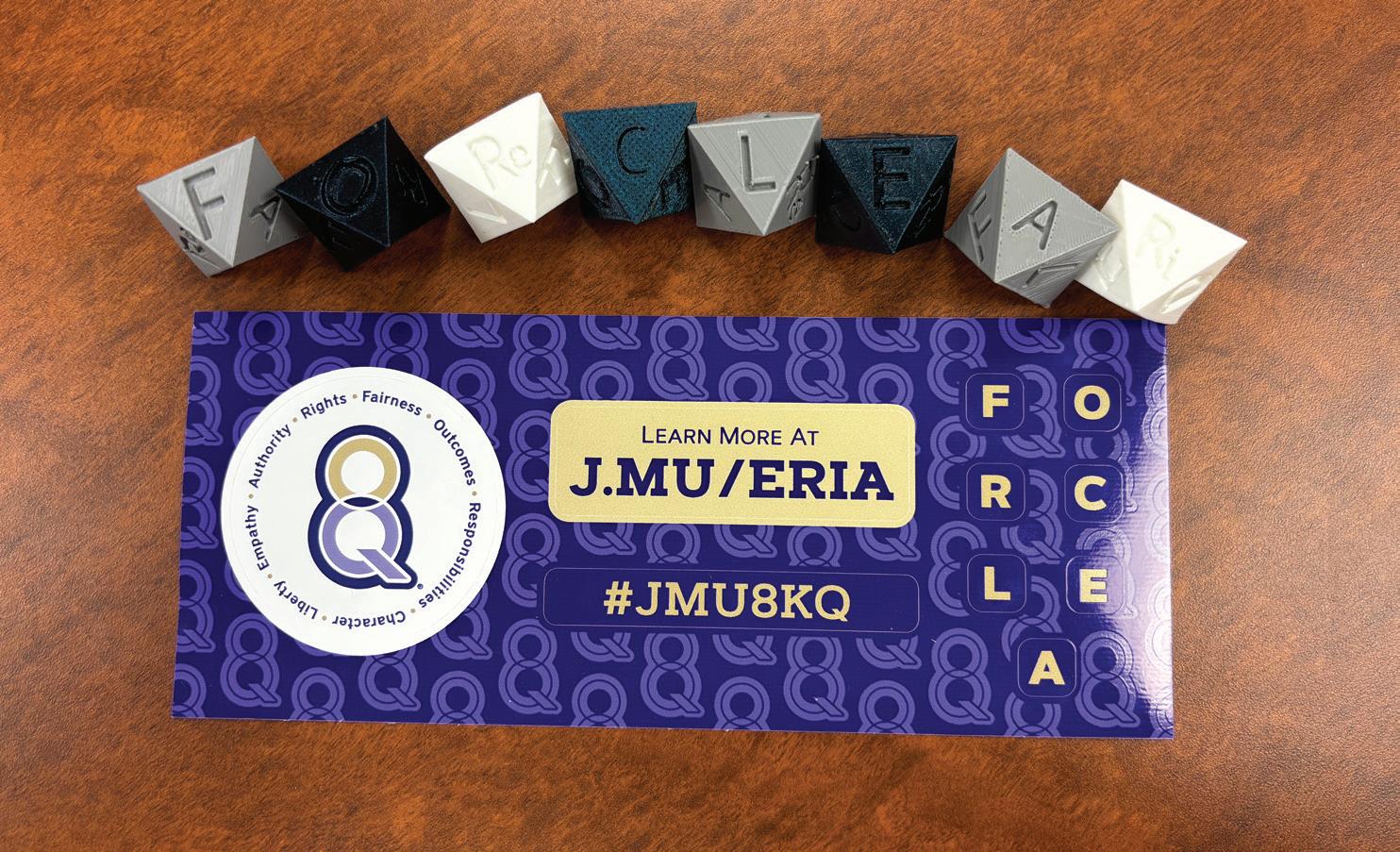
The 8KQ asks individuals to consider the following aspects before making an ethical decision: fairness, outcomes, responsibilities, character, liberty, empathy, authority and rights
Sixuan Wu / The Breeze
an ethical decision. When students notice something important in a scenario, they mark that down by pressing a button.
This is an additional evaluation of how students utilize the 8KQ in their ethical reasoning alongside how ERiA has been periodically reviewing students’ ethical reasoning skills — they’ll first encounter the 8KQ in the “It’s Complicated” freshman orientation online course and then during the annual Assessment Day that students with 45-70 credits participate in.
For “It’s Complicated” and Assessment Day, students write essays that recount a tough ethical moment they have experienced in the past in response to prompted scenarios. Then, these essays are evaluated on a rubric established by ERiA to determine each student’s level of ethical reasoning.
“We can look retrospectively, but that’s rearview mirror thinking,” Early said. “What Dan [Holt] is doing is capturing it real time, and that’s exciting, because in order to show that ethical reasoning training is effective,
you need traction, in the now.”
Students participating in the study are pooled from those enrolled in General Education psychology classes — General Psychology (PSYC 101) and Life Span Human Development (PSYC 160), Holt said.
By documenting the specific considerations each student goes through before making a decision, Holt said he captures the breadth and depth of the students’ thinking process in the moment.
“I’m really interested in those factors that influence the decisions we make,” Holt said. “And now put that in the context of a moral situation, or there’s an ethical tug, it just elevates the importance of that work.”
Why is the 8KQ unique?
Early said one of the 8KQ’s advantages is that it’s a simple system that can be applied to a variety of situations. He added that such a system is unique to how ethical reasoning is taught in higher education — “with a JMU signature on it,” he said.
“There are other universities who are adopting the Eight Key Questions, but we’re the OG,” Early said.
The next step, Early said, is to introduce the system to more universities. He said that Holt’s study aids in this process by showing through research that the 8KQ is not just “home-baked” to suit JMU students, but designed to be an adoptable system for all.
To illustrate this idea, Early recounted an ethical reasoning presentation he gave to an international audience, and he said the audience “loved” the 8KQ.


“They said, ‘I can talk to my family about ethical things, whereas before, I didn’t have the language for it,’” Early said. “I think that’s fantastic. It just shows that [the 8KQ] is international, cross-cultural. You can pick it up and use it.”
As the 8KQ is the center of JMU’s ethical reasoning strategy, many of ERiA’s programs are planned around this system.
One such program is the “It’s Complicated” workshop, a required step for incoming freshmen and transfer students to complete in JMU’s One Book orientation system.
Other events ERiA organizes include ethical reasoning workshops that also serve as Wellness Passport events, tabling events at Warner Commons and Elev8 Ethics — speaker events where guests from across the country share perspectives on current ethical issues.
“I feel like it’s an important skill for people to have,” said senior Annika Westenbroek, an ethical reasoning peer educator. “You might reach the same decision, but having that confidence that you thought about almost
“ It’s an important skill for people to have.”
every angle of it, and that you are willing to consider … a different perspective is just personally an important value of mine, too.”
ERiA’s assistant director, Kacey Damaty, said the “It’s Complicated” workshop is evaluated every year with the help of JMU’s Center for Assessment & Research Studies, and ERiA is currently in the process of evaluating “It’s Complicated” for the incoming class of 2030.
Additionally, Early said ERiA is in the process of drafting a new scenario on AI, which will appear in next year’s “It’s Complicated.”
The assessment scenarios are updated every three years, so each student will encounter two scenarios during their four years at JMU — one at the beginning of freshman year, and one when they participate in the Spring Assessment Day, Early said. He explained that this is to make sure students receive “more dosages” of ethical reasoning training to keep on improving their skills.
As ethical reasoning at JMU continues to develop, ERiA hopes to prepare “enlightened citizens who apply ethical reasoning in their personal, professional, and civic lives,” according to the ERiA webpage.
“I think it’s important to teach ethical reasoning to everyone because, at its core, it’s a skill that can be used to empower the individual to ask questions where they might not have considered it possible to ask questions,” Damaty said.
CONTACT Sixuan Wu at thebreezeweb@ gmail.com. For more coverage of JMU and Harrisonburg news, follow the news desk on X @TheBreezeJMU and on Instagram @BreezeJMU.

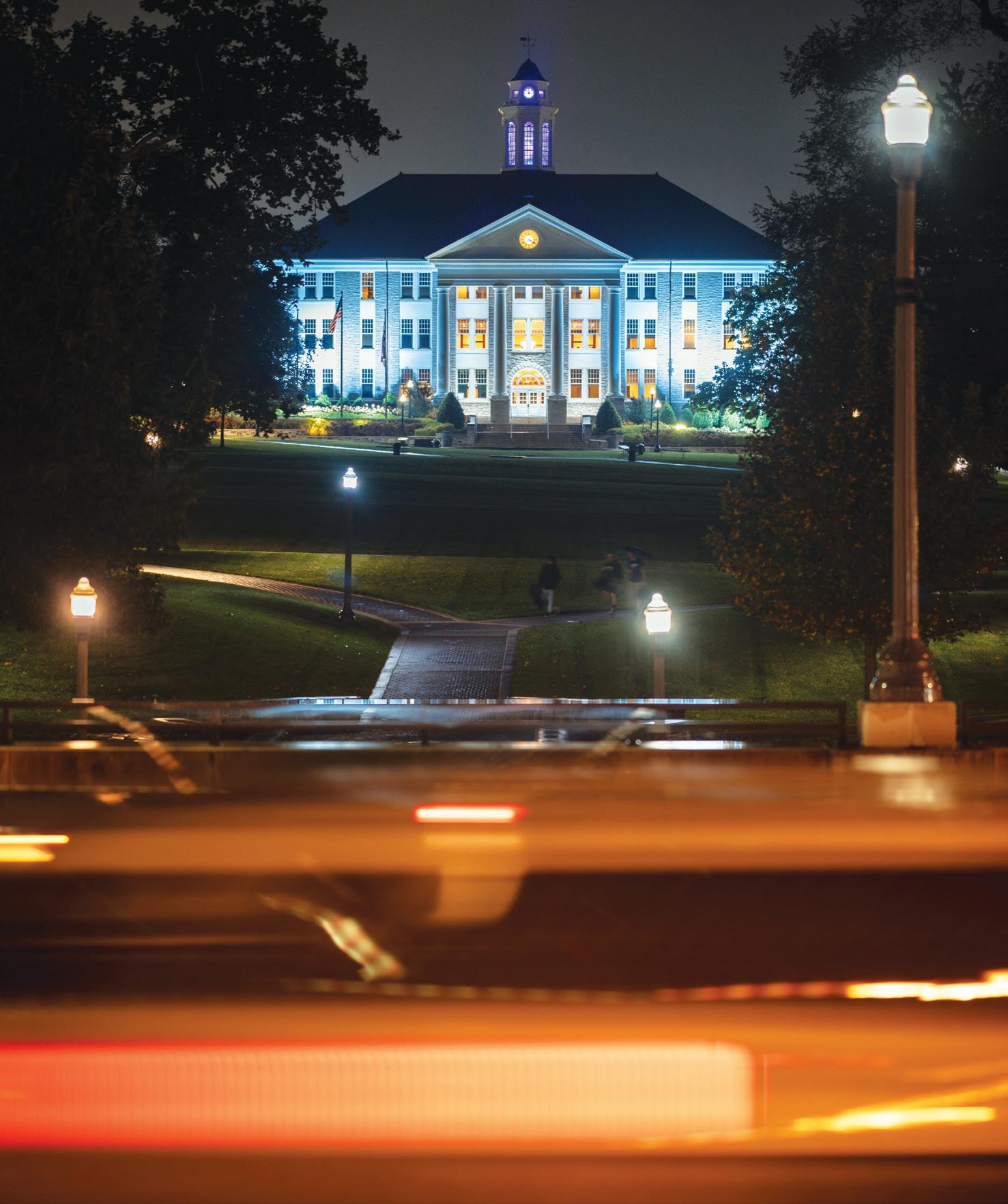


By SAM WRIGHT
The Breeze
The Student Government Association (SGA) unanimously approved JMU Dance Marathon’s $5,000 program grant request and heard presentations from both Student Life and the JMU Alumni Association during its regular Tuesday meeting.
The SGA unanimously approved a $5,000 fund request from the JMU Dance Marathon organization to cover the costs of its MadiTHON event, scheduled for early next semester.
The club’s president, senior Haley Gill, and finance director, senior Emily Wheeler, represented the group.
The MadiTHON is a dance marathon hosted at UREC, which includes eight hours of dancing and activities as well as two meals. The event’s proceeds will benefit the patients of a local Children’s Miracle Network Hospital, Gill said.
The club is also planning a milkshake sale and market fundraiser to supplement the contingency funds, Wheeler said.
The club’s mission statement is to “change kids’ health and change the future by raising the critical funds needed by the Children’s Miracle Network Hospitals,” Wheeler said.
Read more online at breezejmu.org
CONTACT Sam Wright at wrigh4sx@ dukes.jmu.edu. For more coverage of JMU and Harrisonburg news, follow the news desk on X @TheBreezeJMU and on Instagram @BreezeJMU .





Isabel Lewis & Charlie Bodenstein



By BELLA ARIST
The Breeze
Indie-rock band Wallows brought its high-energy performance abilities to JMU on Friday night. The performance had Dukes dancing and singing until the end of an energetic night to remember.
Wallows is a Los Angeles-based band composed of Dylan Minnette, Braeden Lemasters and Cole Preston. The band has been performing since 2011 and Minnette said during the concert that the band enjoyed the crowd JMU brought to the Atlantic Union Bank Center (AUBC) on Friday.
“My sister and I were able to see the Wallows over the summer and the energy was so high and electric we came back for more,” sophomore political science major Ragan Michalski said.
Although she attended the concert with her sister last summer, freshman media arts and design (SMAD) major Madison Michalski has been a Wallows fan since 2020. Ragan said she looked forward to hearing new songs since the band changes its setlist for each performance.
“I am expecting tonight to have a lot of energy and screaming because the Wallows know how to get a crowd hyped up,” Ragan said before the concert.
An hour after doors opened at 7 p.m., indie-pop singer Adam Paddock came on the stage as the opener. He covered songs like “Ain’t It Fun” by Paramore and introduced fans to his own music — including some unreleased music from his upcoming album “The Greatest Compromise,” which will debut Oct. 24.
While many enjoyed the opener, not everyone could understand his performance.
Sunshine Brown (’24) said the “energy was very high” and that Paddock had “good stage presence,” but his lyrics weren’t coming across due to volume issues.
Along with Brown, sophomore computer information systems major Caleb Lander thought Paddock brought high energy.
“I thought for his first time being on a big stage in front of an arena, he did amazing,” Lander said.
Lander, a musician himself, found it inspiring to see another performer deliver such a crowd-pleasing show.
After the opener, there was a 15-minute break before Wallows came on stage. The brief intermission gave the crowd time to regroup and anticipation to build.
Before Wallows came on stage, students and sisters Berkeley and Baylor Collingwood were among the fans ready for the set to start.
“When I found out from Instagram that the Wallows were coming to JMU, I was immediately excited because they have been on my playlist forever,” junior SMAD major Berkeley said.
Baylor has been a fan of the band since 2018 and has heard “so many great things about their concerts” from other fans.
“I am excited to see the band up close because it’s surreal seeing they are actually real and not just images on my phone,” Baylor said.
The band played a mix of older songs along with crowdpleasing hits such as “Drunk on Halloween,” “These Days,” “Scrawny” and “Remember When.” Colored strobe lights and a fog machine illuminated the stage throughout the concert.
“I could tell a lot of the crowd were die-hard Wallows fans, and as someone who isn’t, I still enjoyed it myself,” sophomore political science major Julia Sweeney said.
Sweeney said she listened to some of the band’s popular songs throughout high school and liked its style.
Sweeney added that she “felt nostalgia in the air” when the band played “Are You Bored Yet?” because the song was popular when she was in high school.
“I could feel they cared about the crowd’s enjoyment, and I would definitely see them again,” Sweeney said.
Minnette, the band’s lead singer, engaged the crowd after every song. He even brought the crowd to a roar by inviting Duke Dog onto the stage for the final song.
“The crowd was ecstatic. People weren’t afraid to jump and dance for the upbeat songs, and pull out their phone flashlights for the slower ones,” sophomore international affairs and finance major Meghana Kancharla said.
Kancharla has attended one of Wallows’ concerts before. She felt this one was compact and shorter in comparison. Kancharla also noticed the trio played more mainstream songs compared to their other concerts.
“This show was one to remember, and I would recommend anyone seeing them if they are looking for high energy and a good time,” Kancharla said.
CONTACT Bella Arist at aristai@dukes.jmu.edu. For more on the culture, arts and lifestyle of the JMU and Harrisonburg communities, follow the culture desk on X @TheBreezeJMU and on Instagram @BreezeJMU.
By NICOLAS ISAZA SERPA The Breeze
Thirty-five years after he first put WXJM on the air, John Pezzulla (’86) returned to the studio to reprise his very first broadcast — with the same songs, the same format and the same passion that sparked JMU’s student-run radio station.
As Pezzulla leaned into the mic, the same tracks that once debuted over WXJM’s airwaves filled the studio again. Seeing his dream still alive, he was reminded that the station he built as a young Duke is still thriving over three decades later.
Pezzulla returned to the studio to mark the 35th anniversary of WXJM’s first broadcast. He brought his original handwritten notes from that 1990 debut and recreated the show exactly as he had then, an hour-long set that aired alongside current WXJM manager Riddhi Khanal, a junior media arts and design major. The station, first conceived in 1984, didn’t hit the airwaves until after Pezzulla graduated.
“The fact that WXJM is still here today is an incredible feeling,” Pezzulla said. “It’s a testament to everybody that’s been passionate about this station for so many years.”
What began as a late-night project soon outgrew the classroom. WXJM was the product of an entrepreneurial assignment in one of Pezzulla’s business courses.
The assignment was to create a comprehensive business plan, but Pezzulla saw an opportunity to fill a gap in campus culture. He teamed up with friends to turn the project into reality. WJMU, the station’s original name before it was changed for broadcast, was born and went into production.
“When I was a freshman, a group of us friends really wished there was a student-run FM,” Pezzulla said. “Back then, you didn’t have the options you do today. Options were very limited, and it was not what students were looking for. We thought it was a big miss [to] not to have a studentrun FM station here.”
Creation comes from drive and the constant pursuit of a goal. Pezzulla embraced that principle when he assembled a committee, brought in trusted friends as staff and pulled together an organizing committee that later became part of the SGA in order to establish the station. He said the process was pivotal to his growth as a person, and he encourages all Dukes to take risks of their own.
WXJM, JMU’s student-run radio station, has been a hub for independent music and student expression since it
officially began broadcasting on Oct. 1, 1990. The station gives students hands-on experience in music curation, broadcasting and media production, while promoting independent artists.
WXJM also hosts talk shows on campus life and social issues, and it plays a key role in organizing the annual MidAtlantic College Radio Conference (MACROCK), a spring event featuring over 100 bands.
Today, Pezzulla manages commercial properties in Baltimore, but his love for music didn’t die at JMU. As the station grew without him, so did his involvement in the Washington, D.C., Maryland and Virginia music scene. He collaborated with several Baltimore musicians, including JMU-based band DT and the Shakes.
“I owned a record company, and I managed bands coming out of college,” Pezzulla said. “I went on the road with the bands and did all the bookings.”
The musical landscape is constantly shifting. With streaming more accessible than ever, some question the place of radio in a modern world. But for Pezzulla, hearing those familiar songs play once again in the studio proved something greater: The spirit of student radio isn’t about the medium, but the community it creates.
Pezzulla said he believes the true strength of radio — especially when it’s student-run — is its power to bring people together. Stations like WXJM connect the student body in ways that classes or clubs might not by allowing students to share their interests and discover new passions.
“The station gives students the chance to express themselves,” Pezzulla said. “They can be passionate about what their interests are and play the music they like while also sharing with others.”
For Pezzulla, though, it’s not about what he built but what it meant for him. The legacy he leaves as a Duke and the lessons he learned from his time on campus remain among his proudest and most important moments. He’ll always see himself as a Duke. When asked if he’s still proud to be a Duke, he didn’t hesitate.
“Coming here was the best decision of my life,” Pezzulla said. “It became the foundation for everything I did later.”
CONTACT Nicolas Isaza Serpa at isazasnn@dukes.jmu. edu. For more on the culture, arts and lifestyle of the JMU and Harrisonburg communities, follow the culture desk on X @TheBreezeJMU and on Instagram @BreezeJMU.
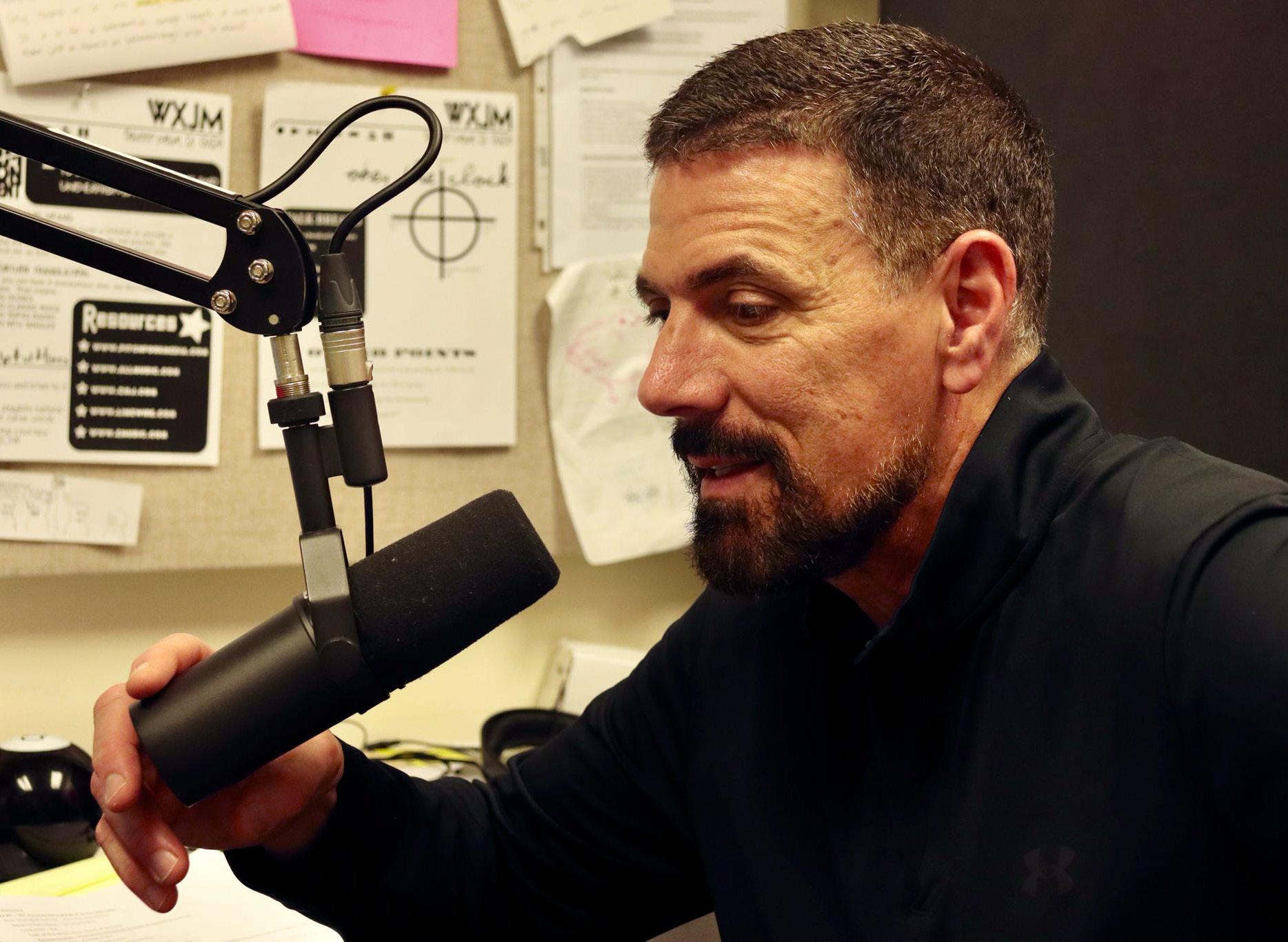


Budget or Bust: How to afford life as a
By GRACE SAWYER The Breeze
Budgeting as a college student can feel like an overwhelming, tedious or even meaningless task, but it’s truthfully part of a foundation for lifelong financial literacy.
Whether a student does or doesn’t have a job, has an allowance or is working with the money they made during breaks, managing what to spend and where can be hard to figure out without some assistance.
In a national survey conducted by Ellucian in 2024 they found that 59% of college students considered dropping out due to financial stress, 78% reported negative impacts on mental health due to financial stress and 57% said they had to choose between college expenses and basic needs like food and clothing.
These statistics illuminate just how hard it is to navigate getting an education while also providing for yourself and your lifestyle.
Luckily, creating a budget and tracking how and where you spend your money can be very helpful and can also alleviate much of the stress that comes along with not understanding how to navigate the challenge of spending money.
To begin, it’s important to recognize your personal fixed and variable costs for whatever time ,frame you are making a budget for. Fixed costs are items that occur regularly and cost the same amount every time they occur; expenses like rent, car payments, gym memberships or insurance. The other expenses are variable expenses are more flexible, such as; gas, groceries, clothing, transportation and entertainment.
Fixed costs typically don’t change very much, so they’re predictable. However, variable costs are different for everyone. Someone without a car doesn’t have to factor in gas money, and someone who doesn’t get their nails done doesn’t have to save money to go to the salon.
Because of this, it’s helpful to look back at credit card statements or track your spending for the past or a few months before making a budget.

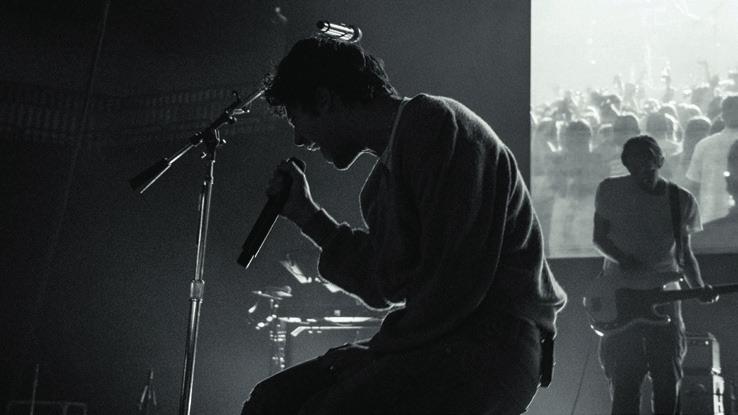





By ALYSSA MILLER The Breeze
Balancing a busy college schedule can leave little room for hobbies, but incorporating time for them is more important than it seems.
Engaging in activities you enjoy outside of school and work helps create balance in your life and alleviates stress that may come from classes, assignments and other
responsibilities. Even spending only a little time doing something fun can make a positive difference in your life.
“[Hobbies] take my mind off things,” senior communications major Eliana Zelaya said.
“I’m just doing what I love.”
Many activities can be considered a hobby, but finding something you can look forward to can be the fulfillment your life is missing.
“A hobby is any activity that you frequently do for pleasure during your leisure time. This

could include creative, athletic and intellectual activities,” according to WebMD.
JMU offers numerous opportunities for students to discover something they will enjoy. The university has over 400 clubs and organizations, so there is something for everyone. If nothing suits your tastes, you have the opportunity to start your own club or organization.
Zelaya enjoys running in her free time and has recently started a running club at JMU.
“I just ran a half-marathon, but training for that was really hard, because when school started, I had to focus on my classes, and I’m taking six right now,” Zelaya said.
College is a great chance for students to explore their personal interests and meet likeminded people through them.
“When I’m not in class, I find myself at UREC, climbing or just going to the gym. I really like hiking and rock climbing and having fun with my friends,” sophomore computer science major Finn Bernuy said.
“All my hobbies are a great mental health break from school.”
Hobbies can be enjoyed alone or with others, and choosing between the two can be based on your mood and personal preference.
“I like painting, knitting and driving around,” senior engineering major Mehzabeen Haque said.
These activities are versatile and can be done peacefully by yourself or socially in groups with others.
Like Haque, many students find they don’t have time for their hobbies during the busy school year, and instead, they indulge in them during summer and winter breaks. She believes it’s beneficial to take a
break from work to get a mental reset.
If you feel you don’t have time for hobbies, the National Institute of Health (NIH) recommends free time management. Doing that effectively can increase your engagement in leisure activities because you have purposefully allotted time for them. Managing your free time can motivate you to complete your work throughout the day, as you have something to look forward to afterward.
It can also prevent you from constantly wasting your free time scrolling on your phone. NIH found that students who effectively manage their free time and enjoy their leisure activities tend to experience a higher quality of life.
The death of hobbies?
A Medium blog post claims that overconsumption has ruined hobbies.
“What were once simple, enjoyable pastimes such as painting, crocheting, crafting and reading, have now increasingly become shaped by consumerism, competition, and social validation — particularly on platforms like TikTok and Instagram,” the Medium blog post reads.
There’s a growing pressure to constantly be productive, which has led to many hobbies being transformed into side-hustles.
Read more online at breezejmu.org.
CONTACT Alyssa Miller at mill26aj@dukes. jmu.edu. For more on the culture, arts and lifestyle of the JMU and Harrisonburg communities, follow the culture desk on X @ TheBreezeJMU and on Instagram @BreezeJMU.
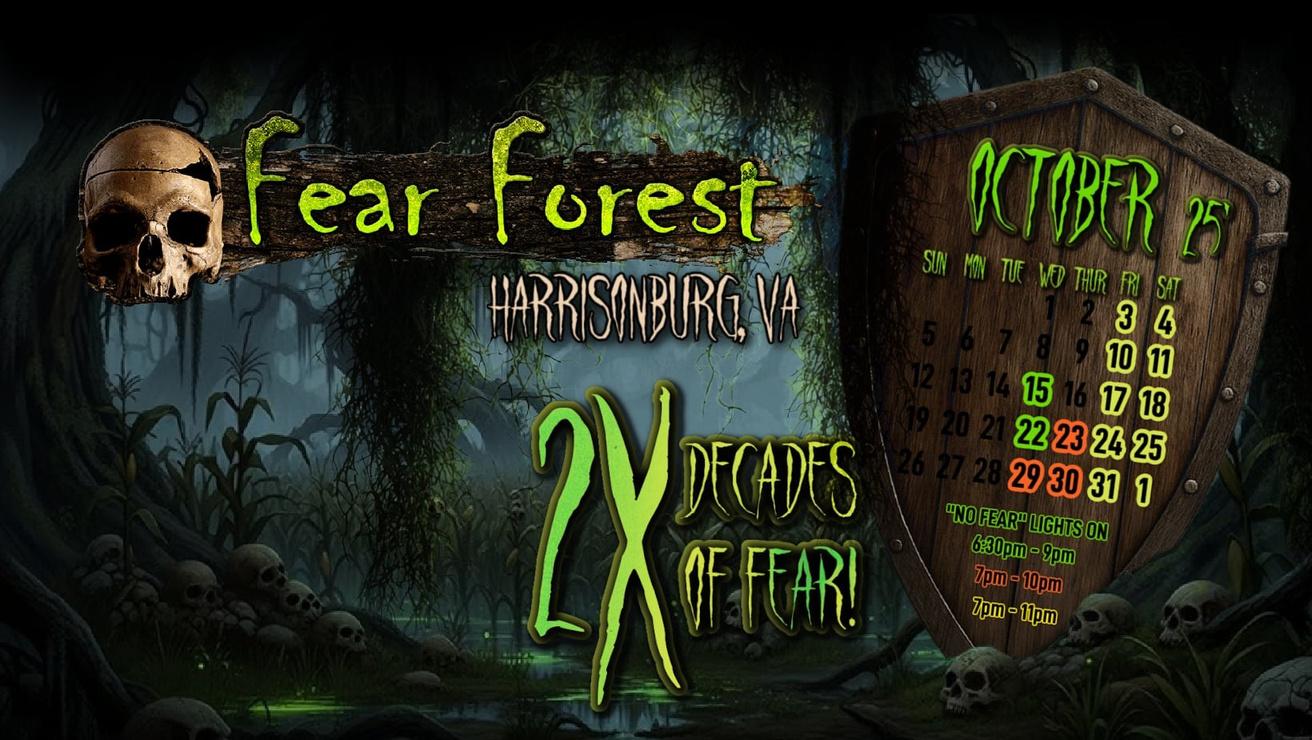

By PRESTON COMER The Breeze
During the third quarter of JMU football’s matchup against Louisville, the Cardinals’ redshirt senior wide receiver Caullin Lacy took a reverse end-around handoff from redshirt sophomore running back Keyjuan Brown. Lacy had the entire right side of the field open with multiple blockers.
It seemed like Lacy was bound for an explosive play — JMU junior nickel DJ Barksdale had other plans.
Barksdale tracked Lacy from one side of the field to the other, chasing him down for a 3-yard loss on what could’ve been a first down — or more.
“That reverse was one of the cooler plays I think we’ve all seen,” JMU head coach Bob Chesney said. “He just showed up out of nowhere against a very fast, very good football player. I think that speaks volumes of what he is.”
While Barksdale’s chasedown was certainly a highlight, it’s unfair to say that’s the story of his season. Barksdale’s staple has been his versatility.
Through five games, the nickel has lined up at his true position 188 times. While he’s spent 74% of his snaps at nickel, Barksdale has been a chess piece for JMU’s defense, seeing time as an outside cornerback, safety and even as a defensive lineman.
JMU defensive coordinator Colin Hitschler said that Barksdale is one of the Dukes’ “best players,” so they don’t want to take him off the field.
“I think versatility is everything,” Hitschler said. “Some plays he’s a linebacker, some plays he’s a corner and some plays he’s a safety. He has to know everything. His ability to do a lot of things makes us unique as a defense.”
Hitchler used Barksdale’s versatility to cover Georgia State senior wide receiver Ted Hurst on Oct. 4. While a combination of Dukes were tasked with covering Hurst, he was held to just three catches for 60 yards.
“We’re going to put him in situations to be successful, let him go play man,” Hitschler said. “He’s a great corner [against] a great receiver, let him play man-to-man.”
Barksdale played 10 snaps at outside corner against the Panthers and allowed just two catches. Barksdale held his own against the 6-foot-3 Hurst despite standing at 5-foot-9.
“DJ has a physicality to him even though he might be considered a smaller guy,” Hitschler said. “He loves to run and hit, and that allows you to use him in a lot of different ways.”
Barksdale said that he “doesn’t really think” about the size difference and keeps the same approach regardless of his matchup.
“Football’s going to be football at the end of the day,” Barksdale said. “I just have to go out there and compete at the same level as I always do.”
Barksdale’s 66 snaps that haven’t been at nickel have been distributed to 33 at corner, 25 lined up in the box, four at safety and three on the defensive line.
“DJ is a special football player, just plays hard, plays physical,” Chesney said. “He can cover, he can tackle, he can blitz, he can really do everything.”
Barksdale said he and Hitschler spent time watching extra film to have conversations about moving him around defense during the offseason because “you have to be able to handle it.”
Despite being used in a plethora of ways, Barksdale hasn’t become sidetracked. He doesn’t let playing multiple positions distract him from performing on the field.
“I go into every game with the same game plan, the same mindset,” Barksdale said. “You can’t really change your mindset, especially in football.”
CONTACT Preston Comer at breezesports@ gmail.com. For more football coverage, follow the sports desk on X and Instagram @TheBreezeSports.



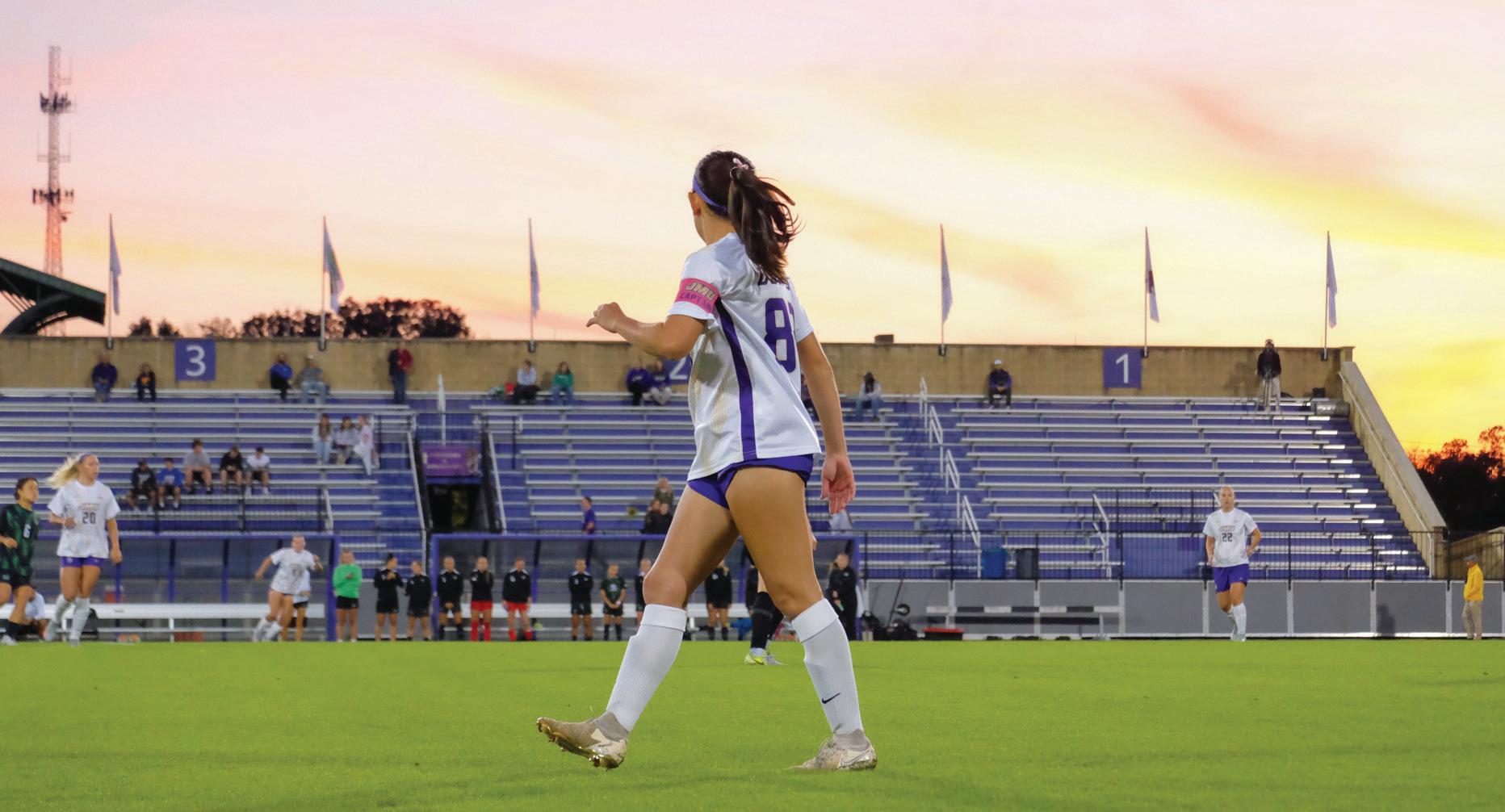
By TOMMY GURGANOUS The Breeze
JMU women’s soccer senior defender Jordan Yang accomplished something during Sunday’s game against App State that she hadn’t yet achieved in her collegiate career: score a goal.
At 25’ and the Dukes down 1-0, Yang received a pass a few steps inside App State’s 20-foot box from fellow JMU senior Jamie Swartz and immediately kicked it into the top right corner of the goal box. Quickly, several teammates swarmed her.
Goal-scoring aside, Yang has provided consistency to JMU over the years. She’s played in every game from her sophomore to senior year, and is a two-year team captain. Yang enjoys the position her teammates have given her and wants to lead by serving them in return.
“I’m contributing more than just my soccer ability,” Yang said, “and to know that I’m able to lead, that I’m able to give advice, it’s just super rewarding to me.”
Yang has also offered positional versatility for the Dukes, playing both at midfield and defender spots at JMU. While rarely the goal scorer herself, she’s helped to produce them with nine career assists in her collegiate career.
“I think she just really wants to win,” JMU associate head coach Rob Donnenwirth said. “She wants to be successful, and she’s gonna do everything she can to do that for herself, getting ready for the season, and then she knows how important her teammates are.”
Yang’s love of sports came from her parents wanting her to be active as a child. She tried her hand at flag football,
gymnastics and track and field in addition to soccer growing up.
In her earlier elementary school years, Yang determined she’d stick with soccer — a sport she became “really passionate about.”
Yang made soccer a priority from then on. When she was enrolled in Centreville High School, she opted to fully focus on playing club soccer for The St. James FC Virginia.
“What I kind of felt is that if I tried to do both club soccer and high school, I would run myself tired and just be overloading myself, and that could risk injury,” Yang said.
Before joining the club, she was met by then-TSJ FC Virginia Girls Academy Director Bobby Puppione. Puppione said he already knew of Yang and knew she could play at the collegiate level.
When they did meet, Puppione noticed a professional attitude from Yang right away as well as the possession of a growth mindset.
“I wanted to put herself in an opportunity which is gonna help her prepare to play college soccer and be successful there,” Puppione said.
Yang credited her club soccer path to college soccer being an option, and thought her composure on the ball — rather than strength and quickness — helped her stand out. Puppione also saw the leadership traits of Yang, saying that “she wouldn’t ask somebody to do something that she wasn’t willing to do herself.”
JMU emerged as a program that was interested in her, and Puppione said he and Yang met about finding the best college fit.
Puppione thought Yang’s playing style would fit well in JMU’s scheme of valuing the ball. Yang agreed and announced her commitment to JMU women’s soccer on July 19, 2021, on Instagram.
Yang said she was happy with her physical fitness going into her freshman year at JMU and saw the field right away. She played 38 minutes in her collegiate debut against VCU, and logged her first of three freshman-year starts against Louisville, playing 61 minutes in a 0-0 draw with the Cardinals.
“I just realized how much trust I need to have in my teammates so that we can work together effectively,” Yang said, “especially defensively and be defensively sound.”
Yang said playing as a freshman was a testament to her pre-college work.
Yang was further called on that year in the postseason; after playing eight minutes against Texas State, she played 71 and 70 minutes in JMU’s final two games of the 2022 Sun Belt Conference Tournament and season, ending in a 4-3 title game loss to Old Dominion.
Yang returned for her sophomore year at JMU in 2023 and carved out a consistent starting role. She assisted on the Dukes’ first goal of that season against Charlotte, started in all but one game and played at least 90 minutes in 12 of 22 games.
In April 2024, Yang received more recognition when she represented both JMU and the Sun Belt Conference at the 2024 NCAA Student-Athlete Leadership Forum in Bethesda, Maryland. Yang was one of over 230 student-athletes and coaches.
“I think all of the lessons I’ve learned during my time here at JMU, in that forum, are definitely applicable outside of sports and the soccer team,” Yang said. “They’re gonna impact who I am as a person and how I also impact the people around me and my coworkers when I do enter the workforce.”
Yang was a proven starter and upperclassman going into her third year with
JMU in 2024, and said she found a workout plan during that summer that had suited her. Before the season, Yang was named team captain for the first time by her team, which had returned several players from last year.
“Honestly, it was pretty easy to click when we got back from the summer,” Yang said. “It just helped a lot of us excel.”
In addition to aiding JMU’s defense, which had seven shutouts that year, Yang also tallied six assists. The Dukes got past Old Dominion in their third Sun Belt Conference tournament matchup in three years, and Yang assisted a goal in JMU’s 3-2 conference tournament title game win over Texas State.
Yang played 90 or more minutes in all four of JMU’s 2024 postseason games, including its 4-1 loss to Ohio State in the NCAA Tournament. The season’s end came with individual accolades, too; Yang made the Sun Belt First Team All-Conference and Sun Belt All-Tournament Teams.
This year, Yang is on another JMU team looking to make the Sun Belt Conference Tournament and NCAA Tournament; the Dukes are 2-1-3 in conference play. Her offseason training has involved a reunion with Puppione the past two summers, where she’s played on the U23 team of the Virginia Development Academy. Puppione is the current Girls’ ECNL director there.
Read more online at breezejmu.org
CONTACT Tommy Gurganous at gurgantr@ dukes.jmu.edu. For more soccer coverage, follow the sports desk on X and Instagram @TheBreezeSports.
By GAVIN AVELLA
The Breeze
JMU football (4-1) continues its Sun Belt slate this Saturday against Louisiana (1-3), fresh off a shaky 14-7 victory against Georgia State in Atlanta for its second conference game.
Similar to last week’s opponent in Georgia State, Louisiana’s record doesn’t exactly jump off the page, but its far from a pushover.
“Yeah, I mean, they’re really good, you guys all saw the Marshall game,” JMU head coach Bob Chesney said during Monday’s weekly press conference.
The Ragin’ Cajuns started their 2025 season with two consecutive home games, the first a closely contested loss to Rice, 14-12, and then a dominant 34-10 win against McNeese to get things back on track.
Louisiana then embarked on a two-game road stint, first traveling up north to face at-the-timeNo. 25 and now-No. 14 Missouri, a game in which they were beaten handily 52-10.
The Ragin’ Cajuns then continued their trip up north all the way to Michigan for a bout with Eastern Michigan and were vanquished by the Eagles 34-31 on a go-ahead field goal with less than a minute to play to bring their record to .500.
“I mean, you look at last year’s record, they were one of the top teams in the Sun Belt,” offensive coordinator Dean Kennedy said. “And then you go to this year, I don’t necessarily know if the record says who they are, they have a lot of returners on the front,
some of their best players, all conference players, and those players are good.”
During its first game back at home after a two-game losing streak and in its first conference matchup of the season, the Ragin’ Cajuns were looking to turn the tide and come away with a much-needed win.
They did, albeit in a very dramatic fashion, winning the game in double overtime against Marshall 54-51 on a walkoff 10-yard rushing touchdown from redshirt sophomore quarterback Lunch Winfield.
“Yeah, I mean, what an awesome win they had the last game they were out there against Marshall,” defensive coordinator Colin Hitschler said. “So [it] definitely has you kind of scratching your head, how do you not end up like Marshall?”
While Winfield just recently made his mark as the Ragin’ Cajuns starter this past weekend against Marshall, Chesney and company are well aware of what he brings to the table.
“In the end of the Marshall game, they made a quarterback switch, and this kid can run all over the place and throw, and he is tough to bring down,” Chesney said when asked about Louisiana and Winfield.
Surprisingly, Louisiana and JMU have never met before Saturday’s contest, as the game will mark the inaugural Sun Belt matchup between the two sides and completes the circle, per se, for the Dukes, with the Ragin’ Cajuns becoming the 13th and final Sun Belt team they will play since joining the league in 2022.

Although Saturday will mark the first time the two sides ever meet out on the field, Chesney and company are no strangers to Louisiana and all that it brings to the table.
“Their offensive line is good, the receivers are good, the tight end is a big dude that can smother you,” Chesney said. “And then they get into this plus one quarterback run game now, and they’re really in a situation where they can use this kid to run and throw and do everything they need to do.”
The “kid” in question is the aforementioned Winfield, who was just recently thrust into the starting job for the Ragin’ Cajuns’ last game against Marshall after redshirt junior transfer Walker Howard suffered a seasonending oblique injury in the season opener against Rice.
Winfield flashed his dual-threat ability against The Thundering Herd, completing seven of his 13 passes for 125 yards and two touchdowns through the air, along with 13 rushes for 139 yards and three scores on the ground.
“They did a great job creating some plays and putting Marshall in some tough situations at the end of that game, and they hit a lot of explosive plays,” Hitschler said.
Read more online at breezejmu.org
CONTACT Gavin Avella at breezesports@ gmail.com. For more football coverage, follow the sports desk on X and Instagram @TheBreezeSports.
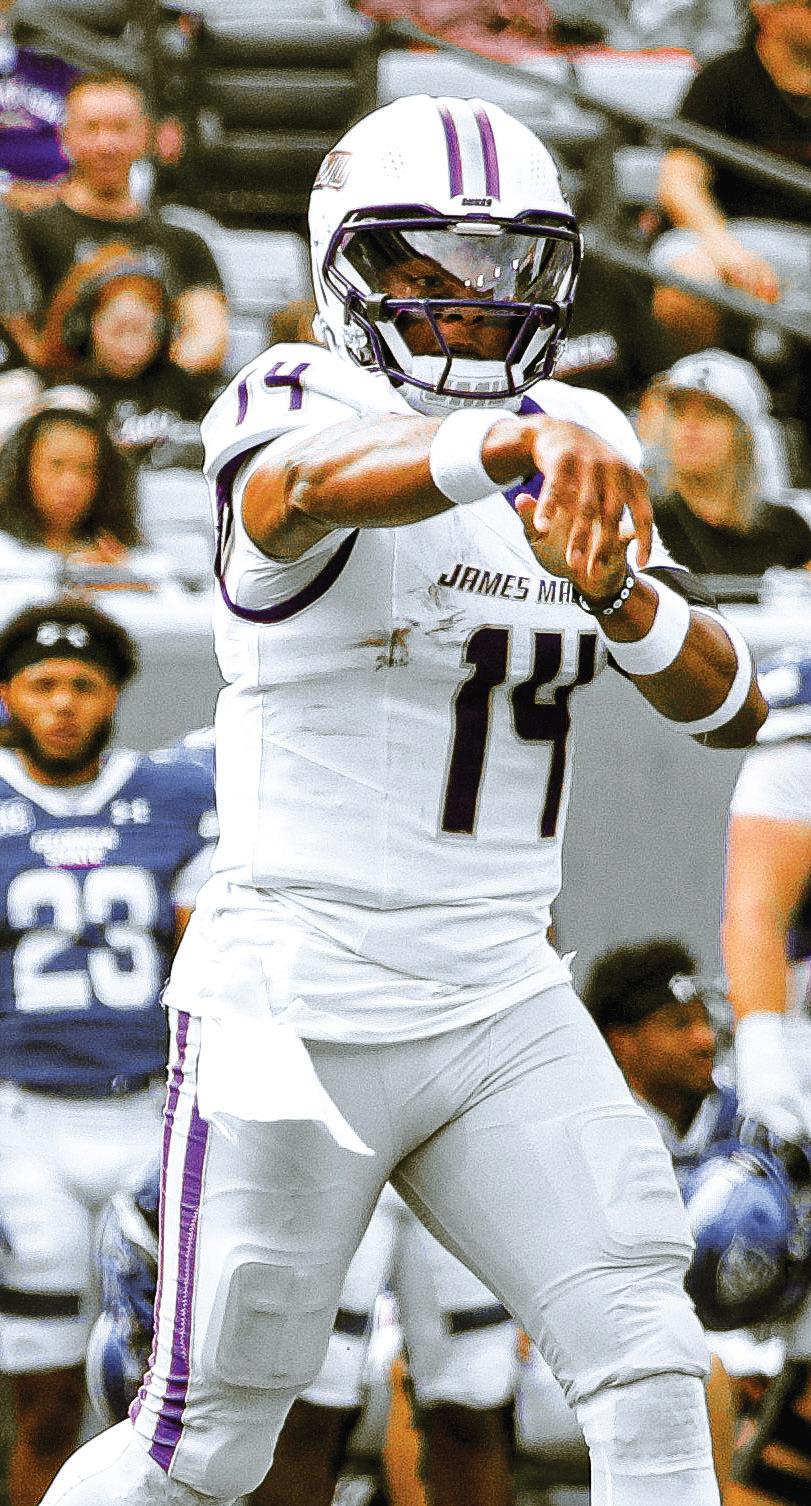
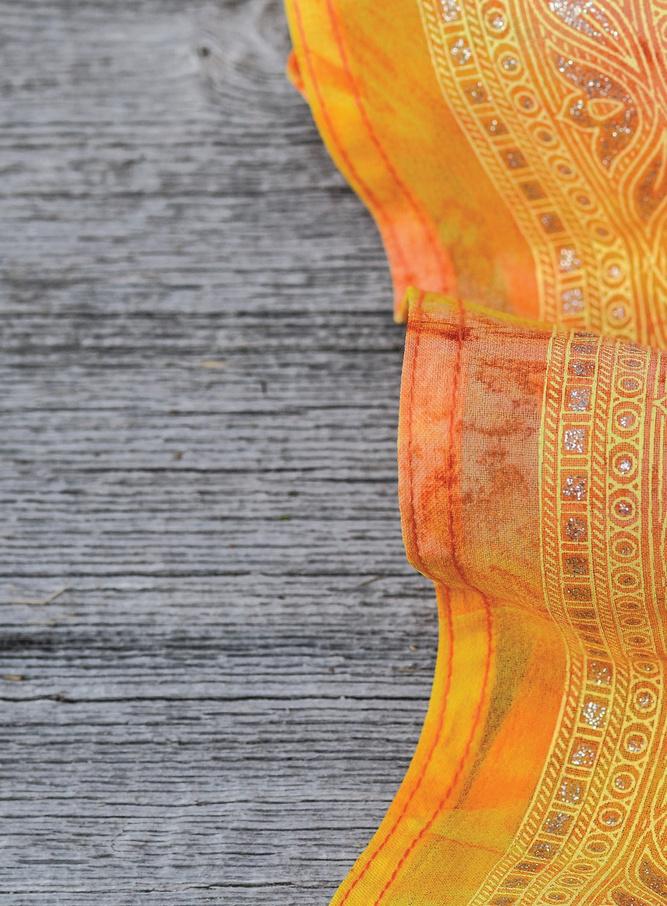
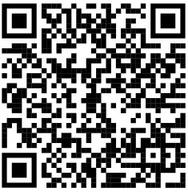
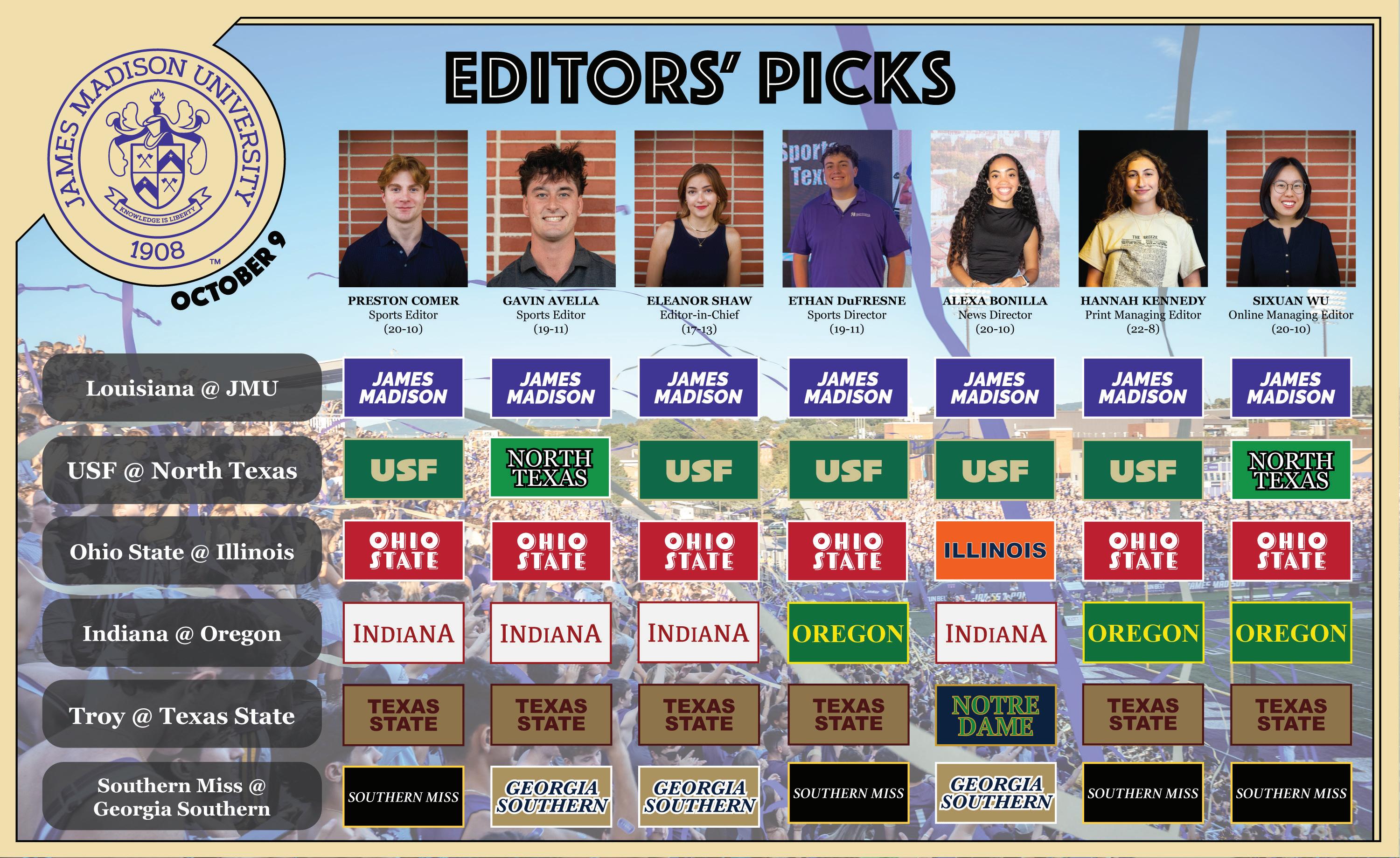

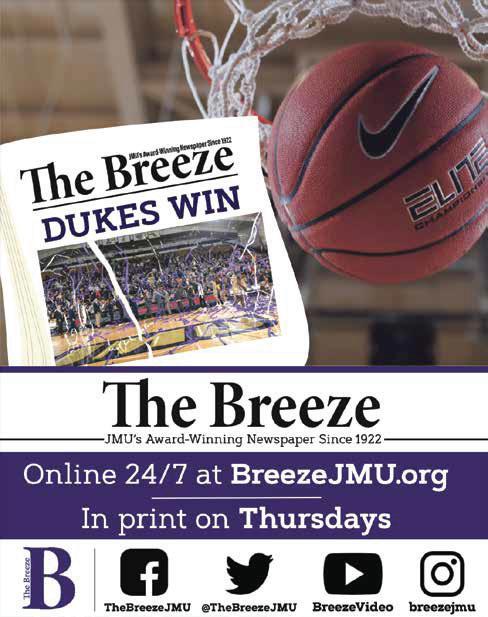

EDITOR EMAIL breezeopinion@gmail.com Caroline McKeown

Want to praise someone or get something off your chest? Darts & Pats is the place to do it. Submit your own at breezejmu.org.
A “please-let-me-out” dart to my teacher who speaks at a sloth rate.
From a student who has other fish to fry.
An “it’s-everyonesfirst-time-living” pat to the opener at the Wallows concert, Adam Paddock.
From someone who wasn’t familar with your game.
A “sharing-is-caring” dart all streaming services.
From a child of a streaming family who doesn’t have TV access anymore.
A “lights-out” pat to my newest bottle of NyQuil.
From someone who yearns to see the Hat Man at night.
SARAH HENDRIX contributing columnist
The University Recreation Center (UREC) is the highlight of JMU, with everything from the equipment to the group exercise classes being beyond amazing. A few students have never set foot in the massive, intimidating and captivating building. I throw in the descriptor “intimidating,” not due to its size but the volume of people who seem to be well-versed in gym dos and don’ts, proper form and perfectly sculpted abs. It’s hard to walk into what feels like a shark tank as a newborn minnow, completely void of knowledge.
A starting point for most students would be the UREC group exercise classes. Classes are an informative source for exercise ideas and varieties, as well as a way to connect with people with a common interest. However, for some people, the basics aren’t equivalent to the beginners’ guide. Whether you find UREC group exercise classes useful and fun — or on the opposite side of difficult and discouraging — advice lies ahead.
Many instructors inform the class that even though they’re leading, “this is your workout, so do what is best for you,” though many people don’t take this seriously and push themselves to be on par with the others.
Pilates instructor senior Quincee Stamps acknowledges that some people think they will “get judged for taking the easier option,” but she assures that isn’t the case at all. That is the primary reason they provide multiple difficulty levels of a workout. If it’s difficult, drop the weights, take a knee, drink water or “talk to the instructor” about what you are finding difficult, and they’ll gladly help come up with betterfitting alternatives.
Personally, the only reason to scan a room or stare at specific individuals is to check my own form. Not once have I found myself judging someone’s difficulty or form. As any JMU Pilates princess knows, these classes are always filled. If it brings any peace of mind, you are one of what feels like 100 and not standing out simply because you don’t have blue dumbbells.
Talking to the instructor is a fantastic way to get tips from the mouth of an expert; furthermore, it’s a way to establish a relationship and build a connection with someone who can be both a mentor and a friend. As previously mentioned, UREC may be intimidating, but a safe space makes it feel a bit smaller.
“I look at all of the participants before my classes … so that I can try and place faces to names,” Stamps said. “I think it helps people feel more welcomed and that’s something that we really try to do here.”
Junior Lizzie Arduino is an instructor for yoga fit plus power yoga, and she’s “on track to get [her] restorative” certificate — another yoga type offered at JMU. Many people find flexibility and balance to be the most difficult aspects of the class. Arduino noted that, depending on the person and the day, “sometimes it is difficult to just sit and set an intention.”
This reinforces the notion that these UREC classes, in the end, are your workout that can be tailored. Yoga is a self-care and self-focused
practice that requires a focus on personal thoughts, not others’ flow; once again, no one is looking at you with judgment.
However, circling back to the idea that a need for flexibility or balance deters new yogis, Arduino encourages them to “keep going, find a different form of yoga you’d like to try, find a different instructor.”
It’s not an offense to the instructor; rather, it’s an act of true self-care. Do what you can for yourself. As one does in yoga, take a look inward. Arduino posed some questions for those discouraged by any class: “What about it did you not like? Was it a specific thing that the instructor said that kind of turned you off to the class? Was it the group of people? Was it that ... you were just feeling a little more judgmental towards yourself that day?”
Consider these carefully and approach them with an open mind. In yoga, Pilates, cycling and every part of life, “trial and error is always going to be your best friend,” Arduino said. Maybe even trial and error with the same class/instructor. UREC prioritizes having a steady schedule with recurring instructors, so don’t fret about not being able to find a beloved class.
For peace of mind, we will delve into some fellow students’ thoughts to ensure that this isn’t a feeling you’re solely faced with.
Senior Khamya Christodonte’s first-ever UREC group exercise class was a cycling class during her freshman year. The best thing to do is jump right in. She was ecstatic to have tried something new and has “loved cycling classes ever since.”
Pushing oneself past their mental block is a fantastic way to discover a new side of themself. Christodonte said some classes were more difficult than others, but it depended on the instructor, reinforcing the idea of trial and error.
Freshman Chloe Dun took jumping straight in seriously. Her first-ever class was cycling. It “was difficult, but I love the challenge,” Dun said, “I walk out every time feeling like I got a good workout in.”
There’s no better feeling than pride in oneself. For those apprehensive toward cycling specifically (this is personal experience), it’s a crucial note that “some instructors are more endurance-based (you are out of the saddle for longer), but many are of the same genre,” Dun said. If anyone is looking for an intense class to motivate them
for their day, Dun recommended the 10 a.m. cycle class on Saturdays.
Though advice helps ease anxieties, there are more ways that JMU can contribute to relieving that stress. One being a revamp of the UREC app. The portion focused on group exercise classes has a multitude of ideas it can adopt to make students feel more in control and comfortable with what they are signing up for.
Sophomore Kevin Bowman suggests crafting a “better [user interface]” for simplified navigation and interaction. JMU has exceptional computer science (CS) plus media arts and design (SMAD) programs that should be utilized. Many students have expressed frustration with the multitude of confusing toggles that Dukes could easily fix. Further, a more aesthetically pleasing interface can increase the appeal of most applications, and SMAD students are more than qualified to do so.
Christodonte suggests adding “how busy it is at UREC,” similar to the feature that can occasionally be found on Google. This would make approaching a workout more predictable and less stressful, especially for beginners intimidated by figuring out the new equipment. Students can feel in control of their environment and find a time that suits their comfort levels.
Knowing how busy it is helps with the main gym equipment, but group exercise classes can be just as intimidating. Adding an “about us” page documenting each instructor and their class times is a terrific way for anxious newcomers to prepare themselves and enter with an open mind. Expanding on approaching a new class, it’s discouraging when either a student or an instructor makes an effort toward a new friendship, but getting into the weekly class is beyond difficult. Knowing their options for classes with the same or similar instructors would be helpful. All these recommendations are simply aiming to make working out easier for students.
CONTACT Sarah Hendrix at hendrisk@ dukes.jmu.edu. For more editorials regarding the JMU and Harrisonburg communities, follow the opinion desk on X @TheBreezeJMU and on Instagram @BreezeJMU.
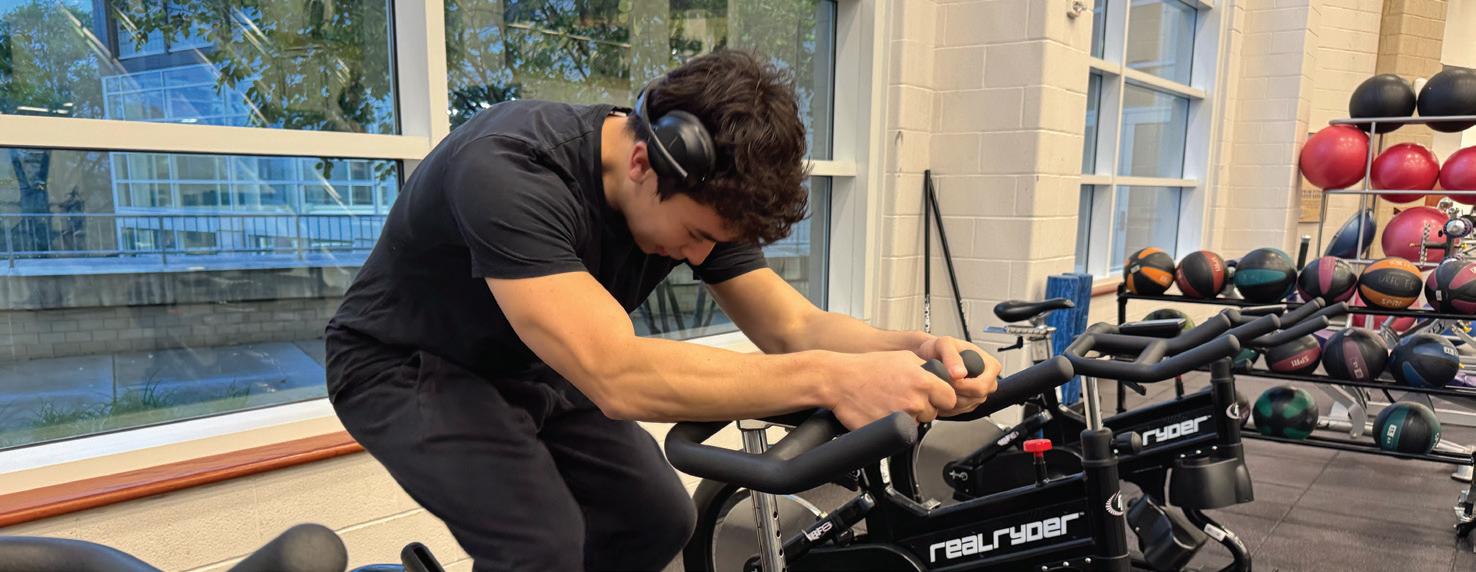
KATIE MAE YETTER Breeze columnist
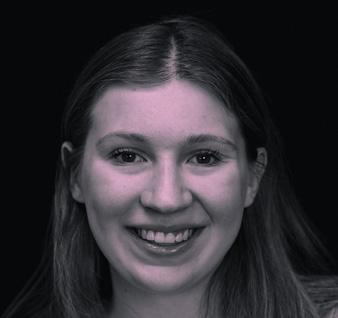
We live in a world where experience matters. Whether it’s logging hours from behind a desk, copy editing important papers or just grabbing coffee for your boss, internships matter. So that begs the question, why doesn’t JMU require them for graduation? While you can gain up to three credits for working a certain number of hours on an internship, there’s still no requirement to graduate.
Now you may be wondering why this is important — why should I want more requirements to graduate when internships can be so difficult to secure? Because it’s all about the experience. According to StandOut CV, more than two-out-of-three interns get full-time jobs after their internship. They’re also likely to have a $15,000 higher salary than those who didn’t do an internship.
Internships are a good way to think ahead to your future. As students, we should always look for ways to be well-rounded, a way to stand out to employers. We have to remember that beyond JMU, we will have professional lives. Part of these professional lives comes from having a well-built resume. Internships not only bulk up your resume, but they put you in front of the hiring team’s eyes. Companies look for loyalty, and internships are an amazing way to prove it.
But I believe we should take it one step further and make a requirement for certain colleges. Colleges like the College of Arts and Letters (CAL) and the College of Business (CoB) require communication and connections. Internships are an excellent way to achieve this. Networking is all a part of our education in these colleges. This is why I think those colleges specifically should be the ones to require them.
Being a CAL student myself, I know it’s important to seize professional opportunities. This stipulation comes with any major or college, but it’s especially important here. You want to be well-known and to have experience to enter your field of choice. Being an intern means commitment,
and showcasing that could help secure your next place of employment in life.
According to Indeed.com, there are many benefits to an internship, including mentorship and guidance toward career goals. It also highlights the fact that internships can help you create a powerful career network. The most successful job hunting can come from the recommendation of others. Internships are a great way to showcase your eagerness and enthusiasm to other future employers, not just the one you are interning for.
JMU is here to think about your future. Everything you do leading up to graduation is for your future. So why not benefit it further by making internships a graduation requirement? It can be in the summer or similar to a general education course, but there should be a time built into your schedule for an internship for credit and connections. Whether it’s virtual or in person, the experience is always wanted when putting together the building blocks of your resume.
Being a student doesn’t just refer to classes. It’s about the things you immerse yourself in beyond that. You want to build yourself a life that you will love, and that starts with employment. Internships are a great way to see what you want
and what you don’t want in your future career. It gives you a moment to experience what your life could look like postgraduation. JMU should implement this not only for credits but for the student experience as well. Your future could hold so many amazing things for you, but you will never know what your passion is until you try. You could connect with people and career paths you never expected.
So to you I urge: Start looking for those connections. Until JMU makes it a requirement for those colleges that depend on connections, take advantage of the resources you do have. Utilize the University Career Center and all of its events. Maybe you see this idea of it being a requirement as an annoyance, but it is ultimately to help you in the future. Eventually, it will most likely improve your quality of life when entering the job market. Think about where you want to be in 10 years, and then go visit the career center and look for an internship to make that dream a reality.
CONTACT Katie Mae Yetter at yette3km@dukes.jmu.edu. For more editorials regarding the JMU and Harrisonburg communities, follow the opinion desk on X @TheBreezeJMU and on Instagram @BreezeJMU.

Music YouTuber Rick Beato uploaded a video where he used generative AI platforms to create a completely fabricated artist on July 15.
First, he used ChatGPT to generate “an avatar of a fictitious male alternative/indie singer and a name for him,” which ChatGPT responded to with an AI picture of a scraggly-haired, stubble-bearded guy with a jean jacket and a Nirvana T-shirt, named “Eli Mercer.”
Next, Beato hopped over to Claude, a text-generating AI, to create lyrics — divided into verses, pre-choruses and choruses. He then plugged the lyrics into Suno, an AI platform that lets you generate entire songs from a prompt, creating this fictional Eli Mercer’s first song, called “West Texas Dreams,” which is an extremely generic, cheesy acoustic pop ballad.
The scary thing is, though, this song was almost indistinguishable from the industry-plant mainstream pop we get shoved down our throats nowadays.
Because that’s exactly what it is. All Suno is doing is scanning all the information on songs it can find that relate to the buzzwords you type in and smushing all the elements of those songs into one synthetic blob of a tune.
Some people don’t seem to care that this music is AI-generated as long as it sounds “good.” Proving that mainstream music can use this to produce the same overly-processed, repetitive, melody-recycling pop music that they’ve been producing in the first place, and then litter social media trends and music streaming platforms with it — and no one would notice — is scary and depressing.
It’s almost the perfect joke — we’ve been force-fed music that comes across as so synthetic that when actual synthetic music presents itself, a lot of us can’t see the issue or tell the difference.
Back in 2023, TikTok user @Ghostwriter977 posted a song supposedly by Drake and The Weeknd, and then uploaded it to Spotify under the name Ghostwriter, but the lyrics and vocals were completely AI-generated. Even after users realized the song was created with AI — and not by the actual artists themselves — it continued to be praised and used in countless videos, gaining 600,000
streams on Spotify before being removed from the platform for infringement.
Last year, musical giant Pink Floyd held an animated music video competition for the 50th anniversary of “The Dark Side of the Moon” album, and out of around 900 different submissions — one of the winners was a completely AI-generated animation set to Pink Floyd’s “Any Colour You Like” — while countless of other submissions, made by people with real ideas, meticulously crafted for weeks and weeks in hopes of getting the limelight with their favorite band, went entirely unnoticed.
It goes to show that people can sit there and accept, praise and utilize a work, despite it having no creative effort put into it, no time into making it and no effort from a human being. Making it devoid of any type of talent, effort, passion and meaning. If that continues, then we’re doomed as a society when it comes to art, literature, learning, emotion, expression, identity and culture.
We shouldn’t let the one thing we’re good at be dumped into the wirey, electronic void of an algorithm. Humans are blessed with the ability to express themselves through artistic and interpretive mediums and the ability to meticulously craft something that provokes thoughts, emotions and change. If we give that up, we become ants — forever bound to mundane roles in society, just cogs in the machine. If AI is going to be shoved down our throats, it should be used for all the crap we don’t want to do.
A post on X from author Joanna Maciejewska said it perfectly: “I want AI to do my laundry and dishes so that I can do art and writing, not for AI to do my art and writing so that I can do my laundry and dishes.”
The bottom line is that people need to go out and make something, anything at all, And stop letting machines and rich industries feed them mindless slop and regurgitated catchy melodies for a 10-second dopamine rush. Go ahead and pick up that old dusty guitar in your attic and make a riff. Even if it ends up sucking and you have little musical knowledge, it’ll already be infinitely more important and meaningful than the latter. Get your
friends together, buy a few cheap used guitars and amps and go to town. Write a song, draw a landscape, create a screenplay, take a picture, read a book. Do what we’ve spent our entire existence as a species — and the only species for that matter — doing to make life meaningful. Art imitates life, not a motherboard.
CONTACT Luther Covert at covertlj@dukes.jmu. edu. For more editorials regarding the JMU and Harrisonburg communities, follow the opinion desk on X @TheBreezeJMU and on Instagram @ BreezeJMU.




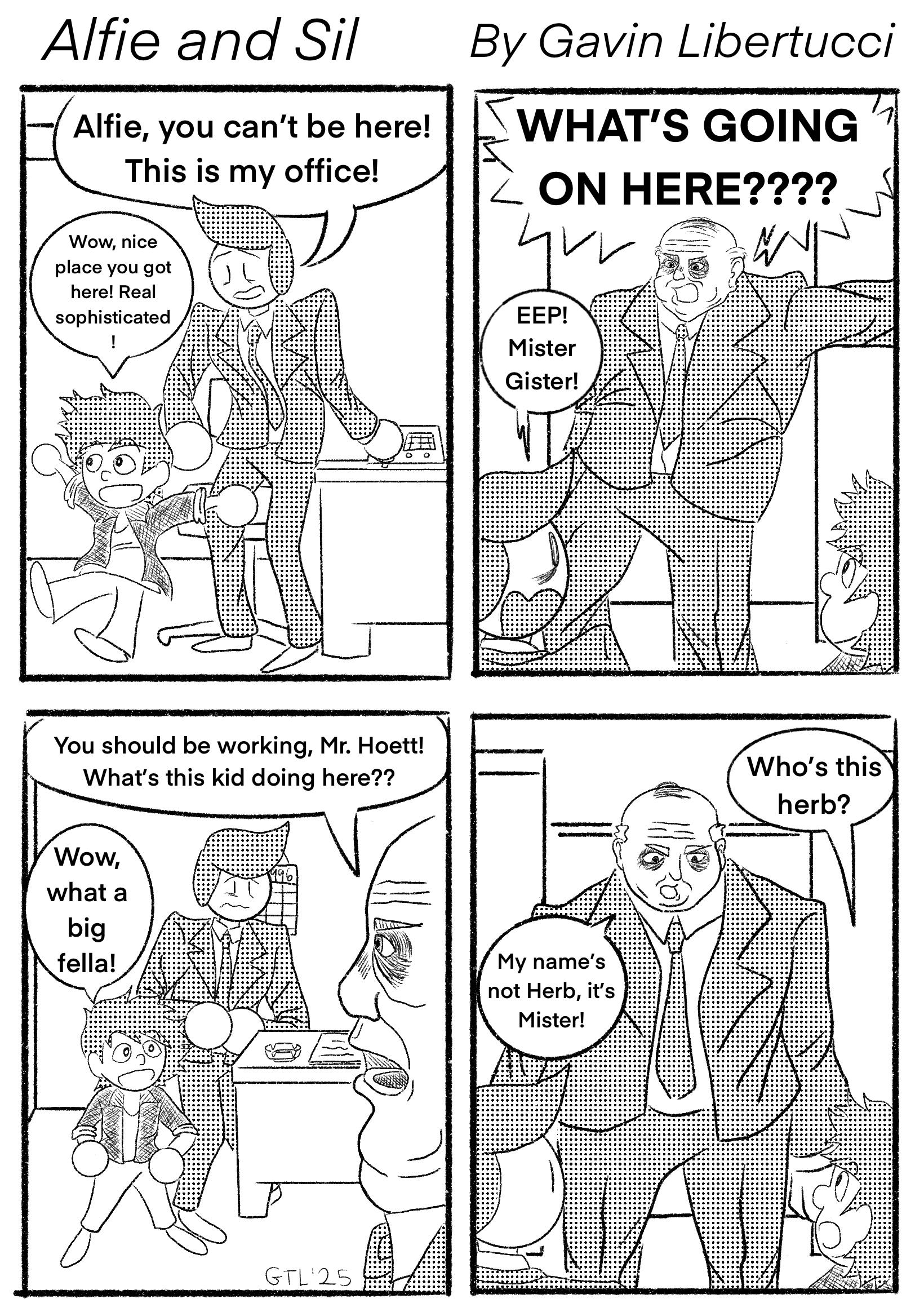
EDITOR-IN-CHIEF Eleanor Shaw breezeeditor@gmail.com
NEWS EDITORS Emma Notarnicola & Landon Shackelford breezenews@gmail.com
COPY EDITORS Kayla Katounas & Joelle McKenzie breezecopy@gmail.com
PRINT MANAGING EDITOR Hannah Kennedy breezepress@gmail.com
CULTURE EDITORS Isabel Lewis & Charlie Bodenstein thebreezeculture@gmail.com
PHOTO EDITORS Kailey Garner & Annabel Dewey breezephotography@gmail.com
ONLINE MANAGING EDITOR Sixuan Wu thebreezeweb@gmail.com
SPORTS EDITORS Preston Comer & Gavin Avella breezesports@gmail.com
AUDIENCE EDITORS Ella Warren & Madeline Buynak thebreezesocials@gmail.com
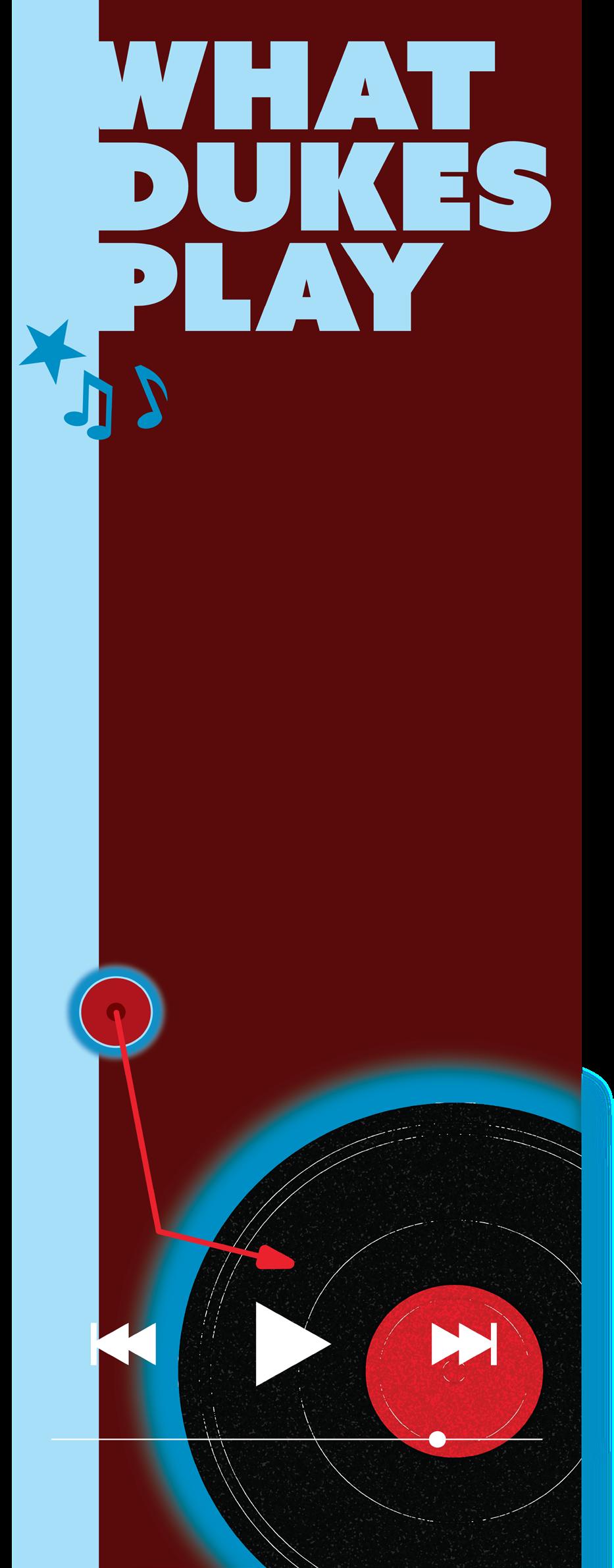
“Leave Me Be” by Landon Wilks
“Tit for Tat” by Tate McRae

“Winter” by Khalid
“Jackie and Wilson” by Hozier

“Luna” by The Smashing Pumpkins
“Limelight” by Rush

“Your Apartment” by Wallows
your answers on our weekly Instagram poll @BreezeJMU!
S. Main St. Harrisonburg, VA 22801 PHONE: (540) 568-6127 FAX: (540) 568-7889
OPINION EDITOR Caroline McKeown breezeopinion@gmail.com
ART DIRECTOR Julia Tanner thebreezeartdirector@gmail.com
TV NEWS DIRECTOR Alexa Bonilla jmubreezetv@gmail.com

If you have any corrections, please contact the section editors via their designated email or the editor-in-chief at breezeeditor@gmail.com.

Los Angeles Times Daily Crossword Puzzle
Edited by Patti Varol
Come to a close
Beyoncé, to the Beyhive
Replace a player on the basepath
Comedian who co-created the Netflix animated series “Big Mouth”
Fly or fish, for example
Mama’s hermana
By

__ de gallo
Reject, on a dating app
Go on a break, or what the starts of 16-, 20-, 32-, 43-, and 57-Across can be called
Add a raised design to
Younger “ManningCast”



Madison Marketplace is open for business, and all text-only listings are FREE ! Post job listings, announcements, rentals and more using our online placement tool. Ads run two weeks online and in two print editions.
4 bedroom/4.5 Bath Location: Copper Beech, 1.7 miles to campus $830/month, first month rent FREE, co-ed (JMU students)
Newly renovated and fully furnished! Includes: Deck, in-house laundry, parking, and more. Popular community! Interested or know someone who is? Please contact cb.studenthousing@gmail.com and reference The Breeze Ad.
Two Bedrooms, partially furnished, shared bathroom and kitchen private sink and vanity in each bedroom. May be shared by two people. Both required to sign lease. Electric, gas and water included. TV and internet available. 10 miles North of Harrisonburg. Lease and security deposit required $1,300. Call 540746-7445

Are you ready to be the driving force behind cutting-edge public safety technology? Join the Harrisonburg-Rockingham Emergency Communications Center’s team as a Software Portfolio Specialist and help shape the future of emergency communications in a high-impact, mission-driven environment. Find out more/apply online: https://www.harrisonburgva. gov/employment.EOE.
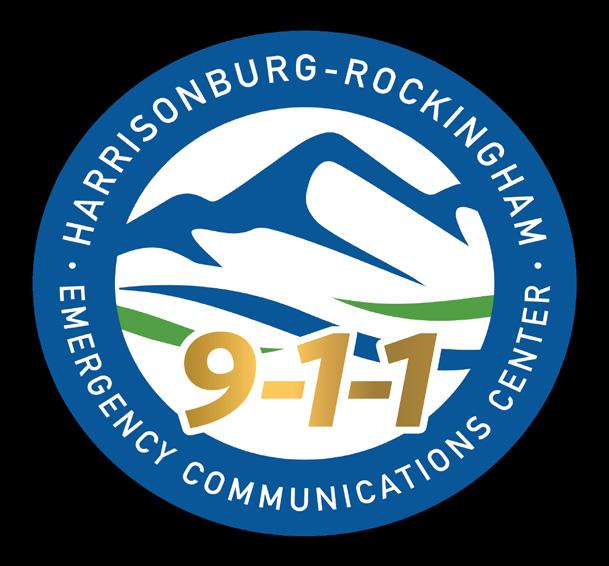
Career Opportunity - Police Recruit
The City of Harrisonburg is currently accepting applications for noncertified individuals interested in joining the Harrisonburg Police Department, which offers a rewarding career plus an excellent benefits package, including enhanced hazardous duty through the Virginia Retirement System (VRS). Find out more/apply online: https://www.harrisonburgva.gov/ employment. EOE.

Transportation Services Airport transfers, wine tours, special events Motorcoach trip to Liberty football game Sept 20 Contact Adventures-N-Travel.com Call or text 540-810-1196 mikepackett@aol.com
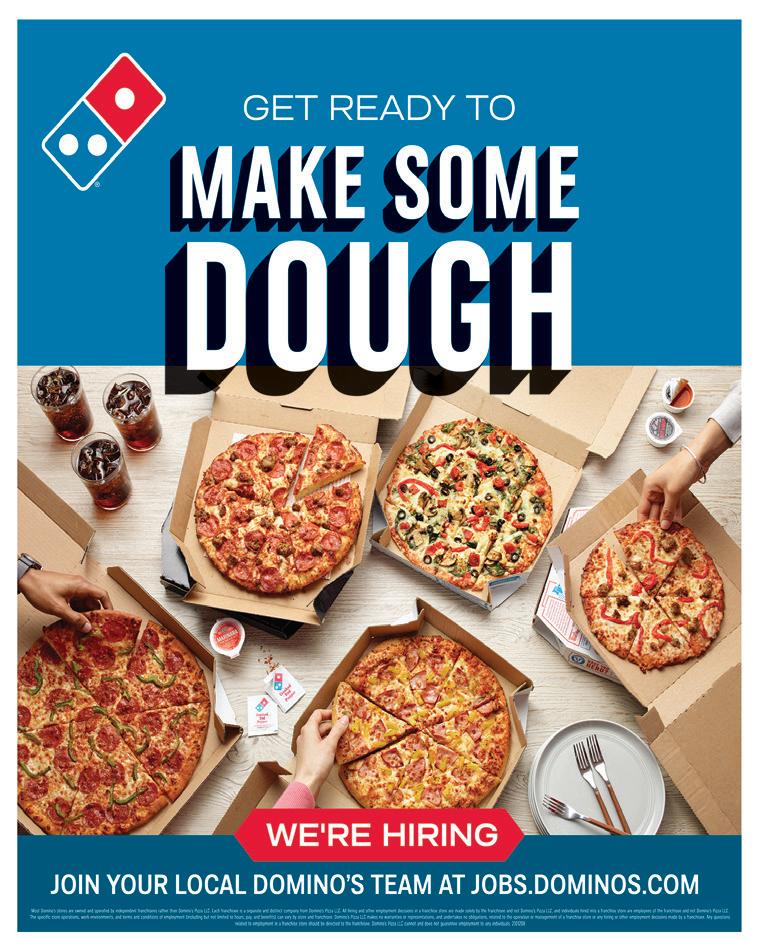
2015 Hyundai Accent Sport 4DR Hatchback black, 82,350 miles $7950
2015 Hyundai Accent Sport 4DR Hatchback black, 82,350 miles beautiful maintained per schedule, garaged, steam cleaned engine, waxed often. Market price sells priced $9759 with 120K miles is average. KBB Valued $8600. Priced $7950 well below average with less miles beats all offers. Reliable college transportation see Autotrader.com

Missing Giraffe! Please Help!
This large concrete giraffe yard ornament was stolen from an elderly resident Aug. 22 on Port Hills Drive. It is a very sentimental gift and is 40 inches high. Please return to 1588 Port Hills Drive No questions asked. If you have seen it please call Andy at 757-592-2888

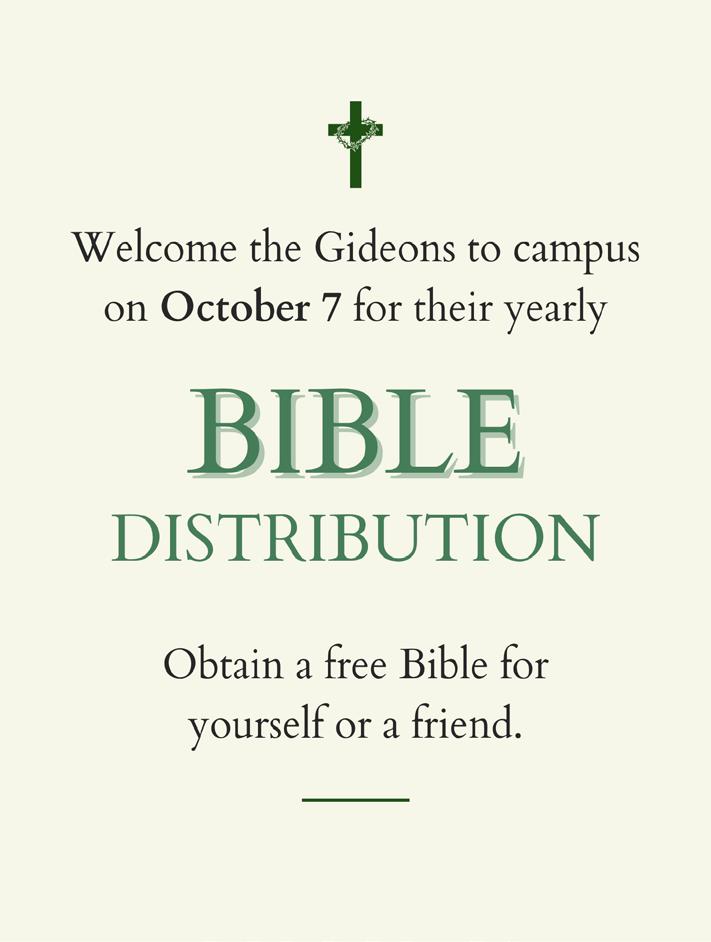
Game room
Large folding ping pong table with accessories. Foosball table with extras. Both in good condition. Must pick up, cash only $75 each. 540-578-2362



